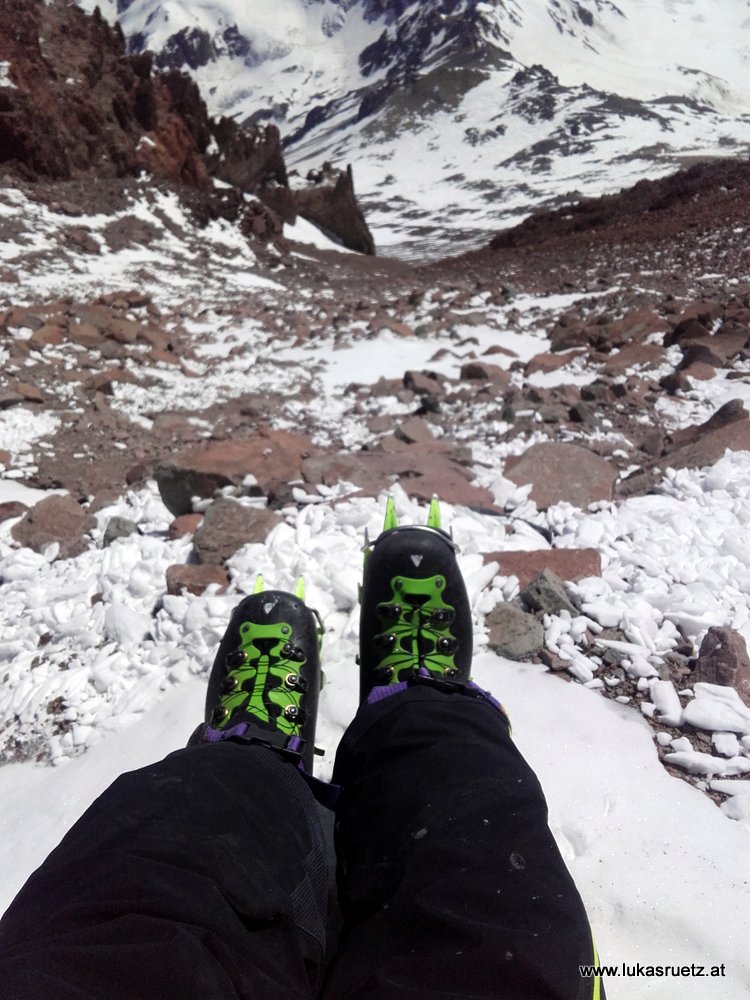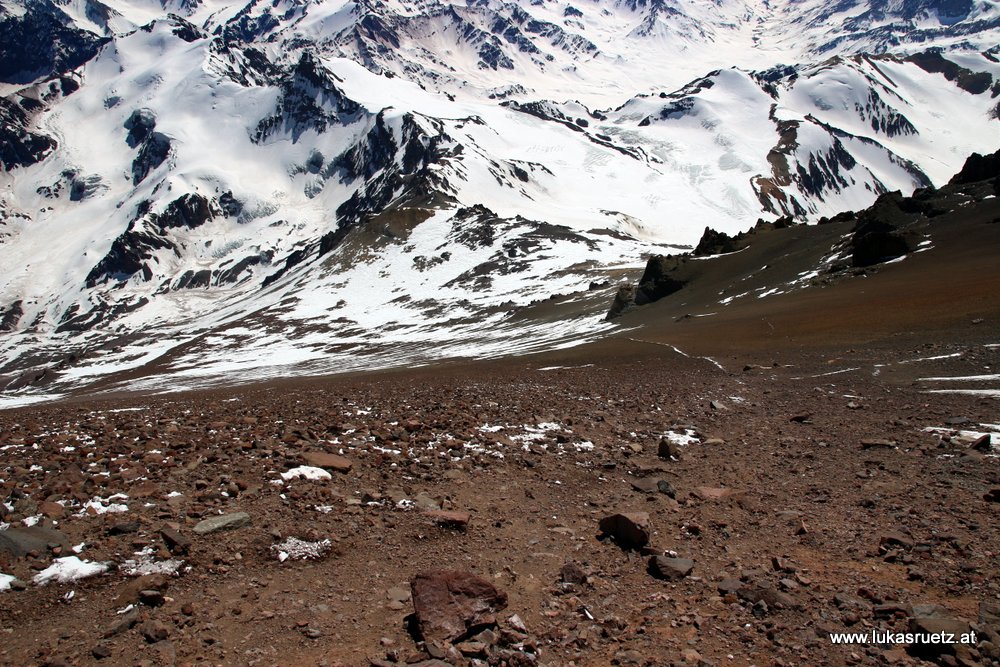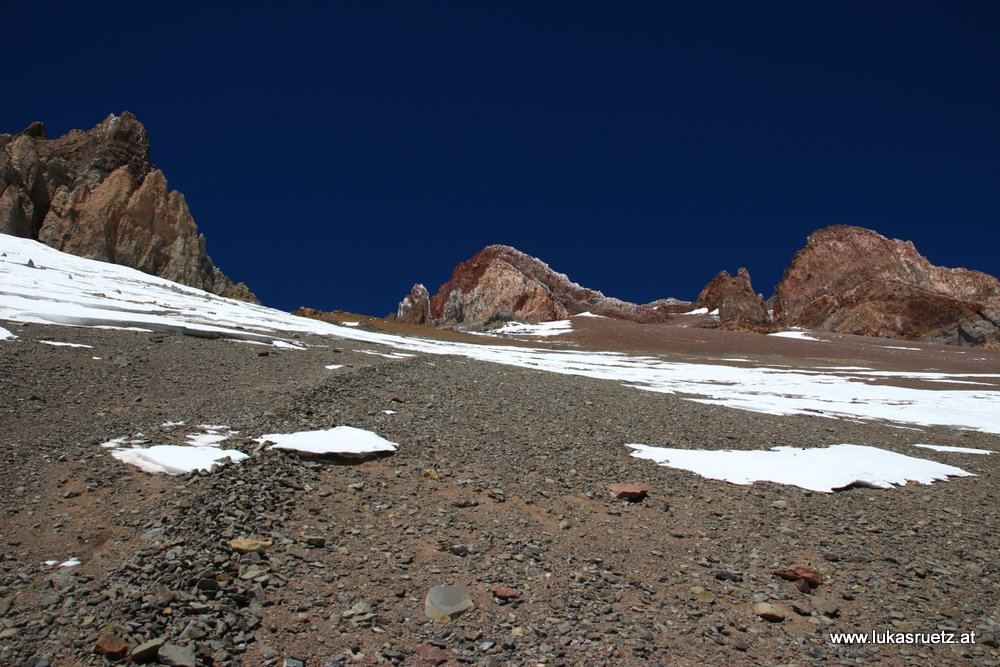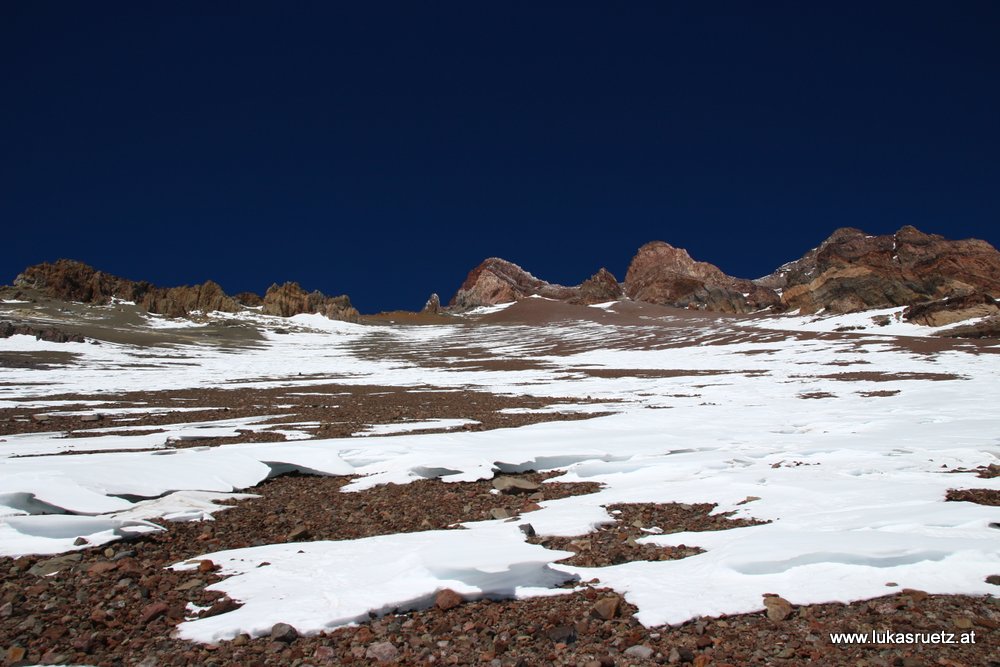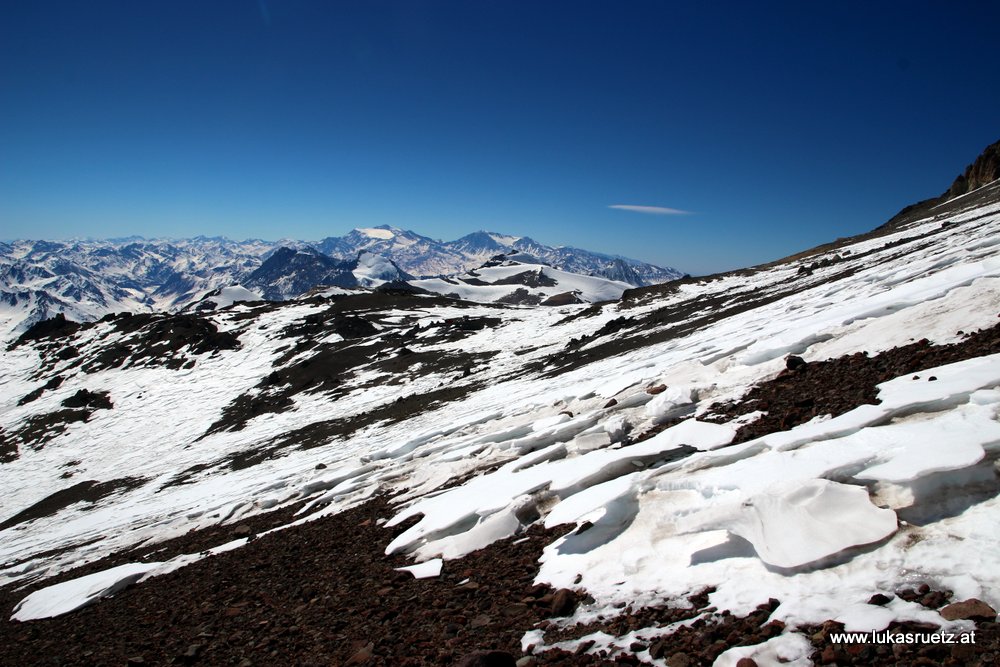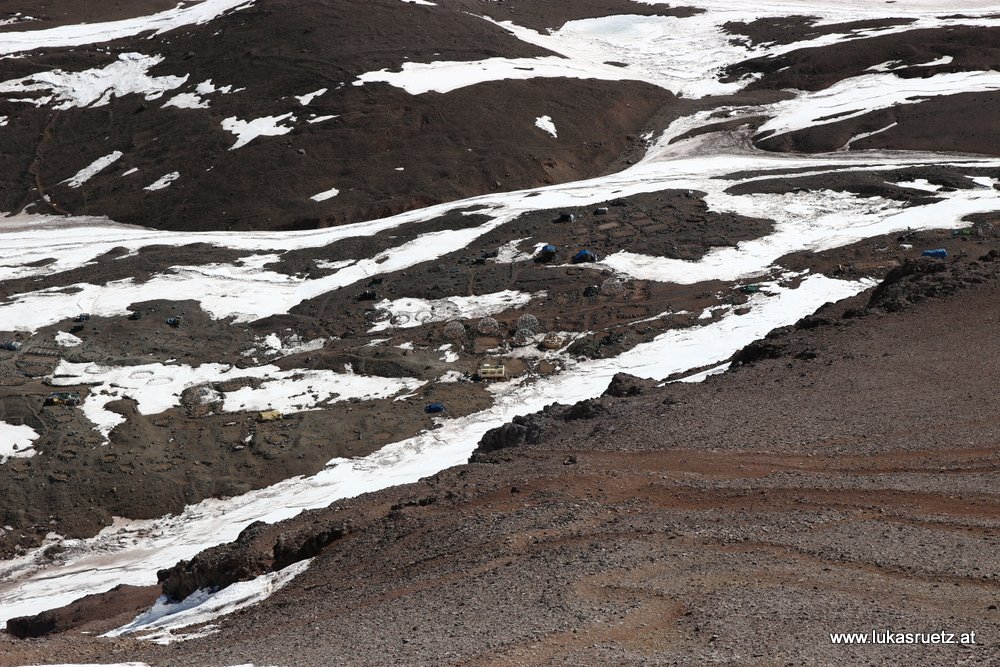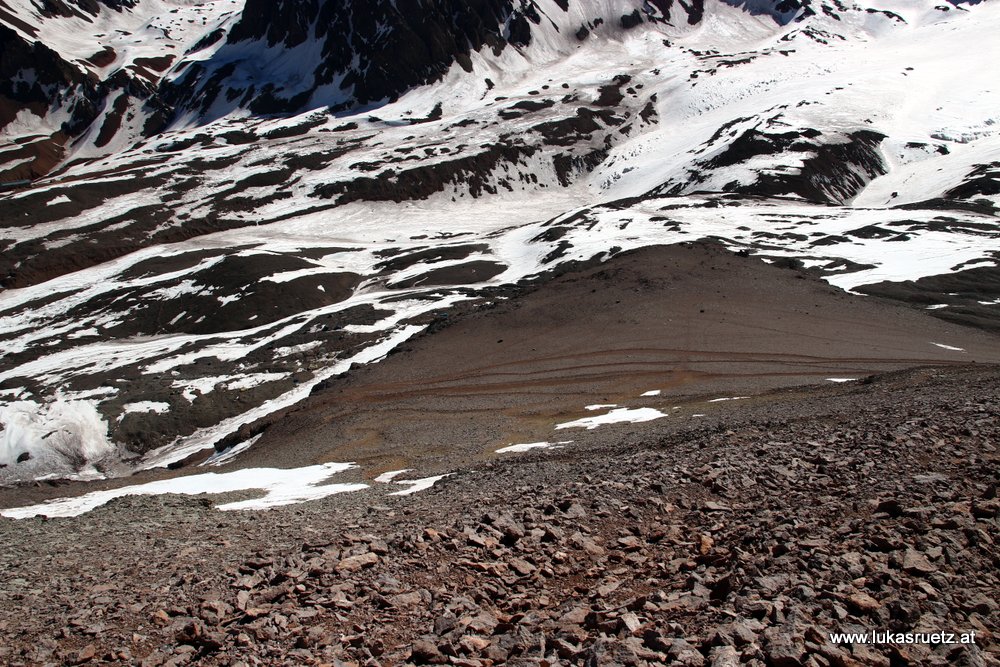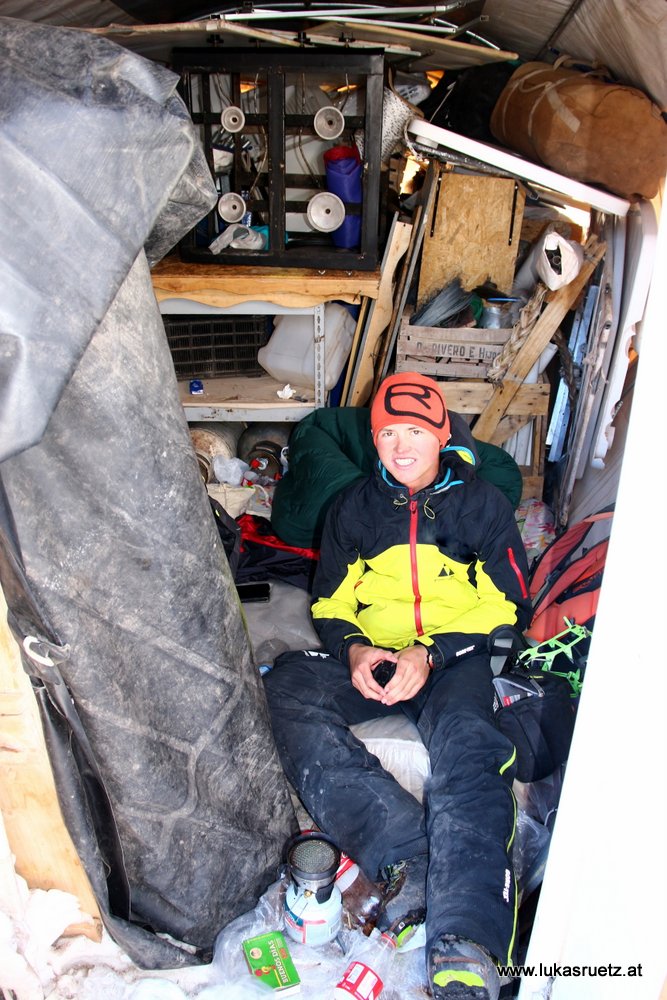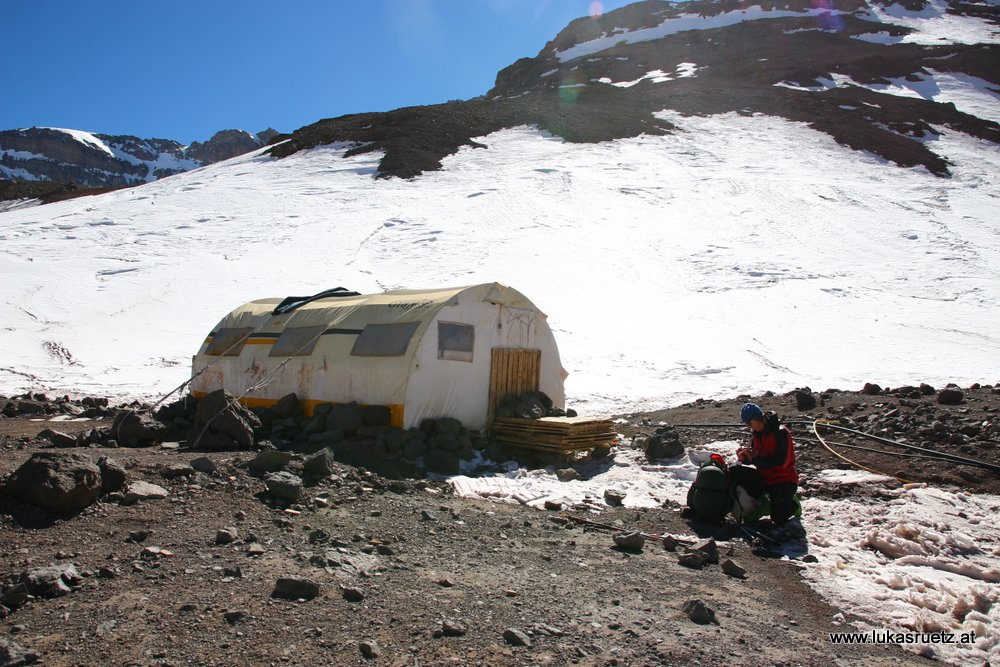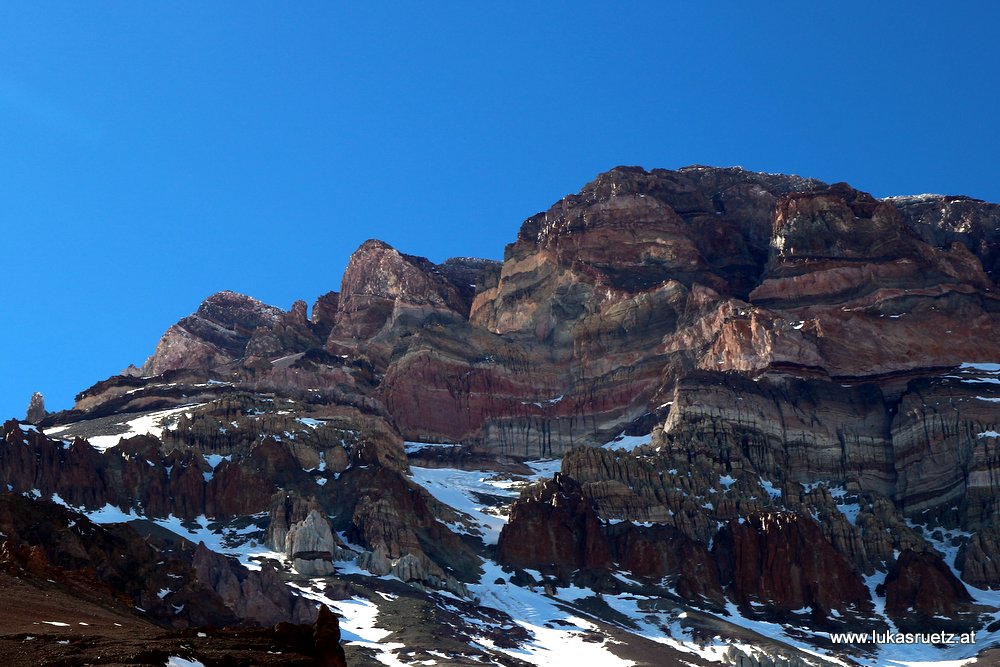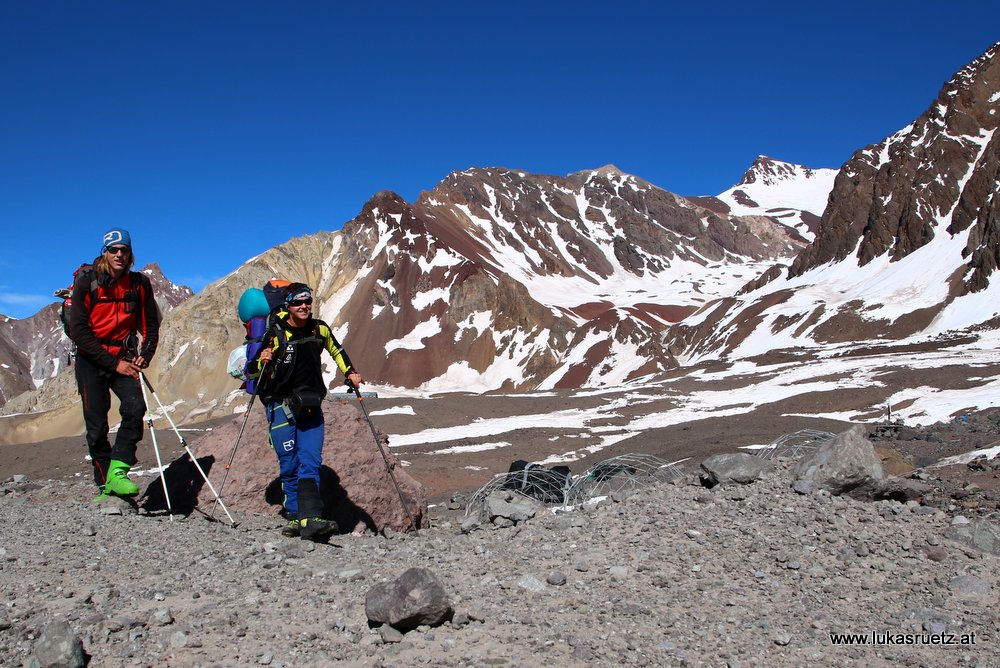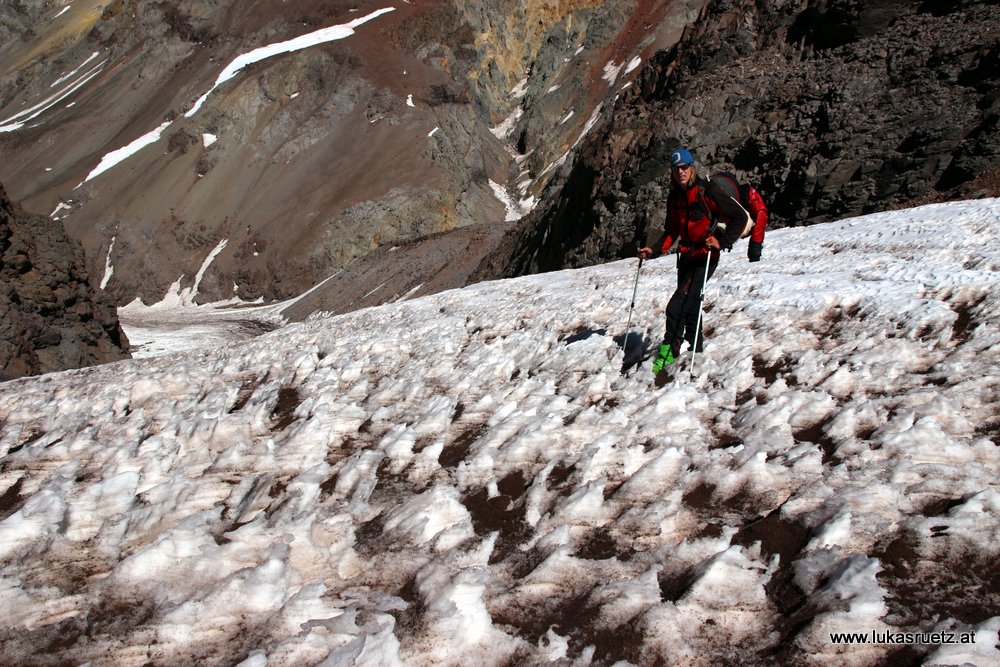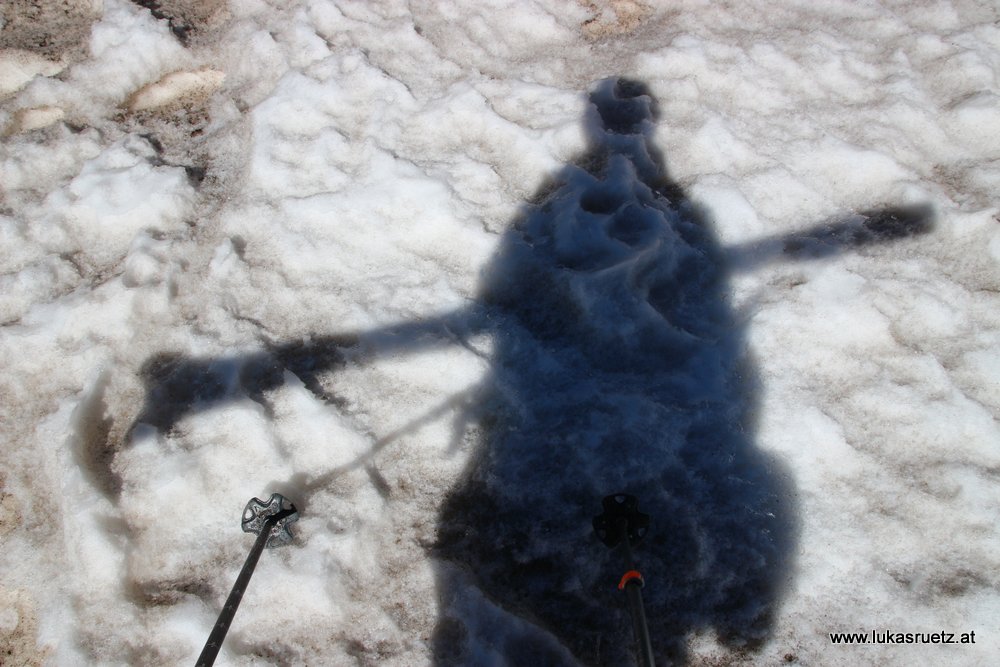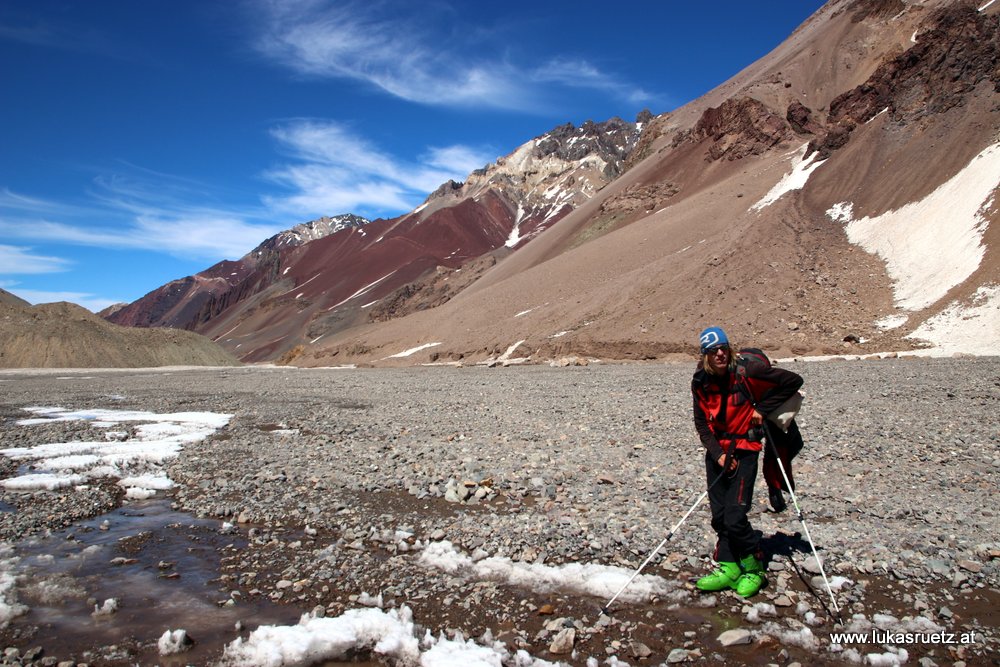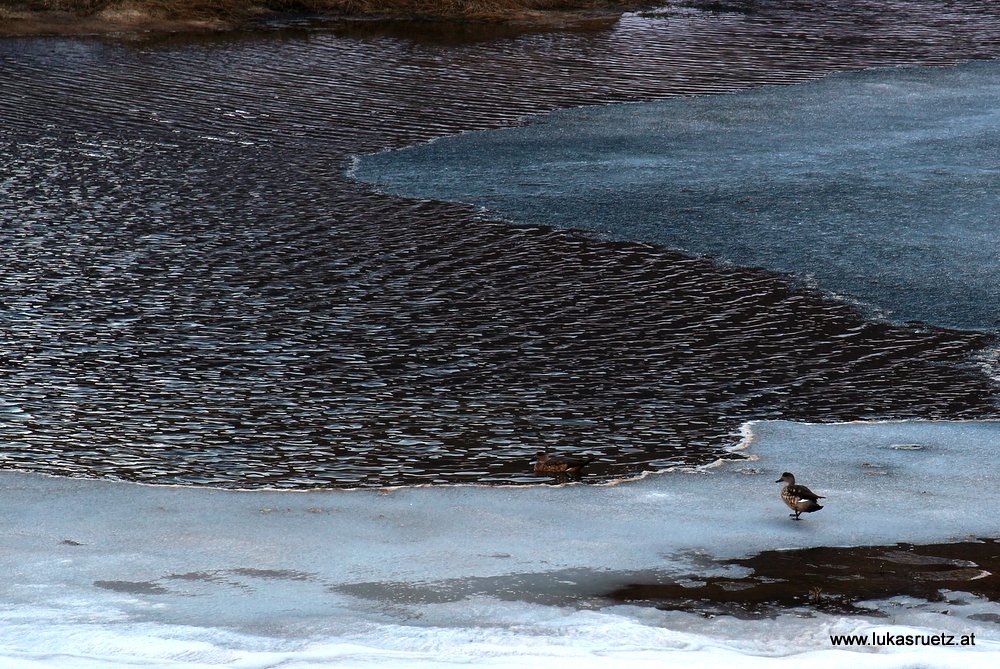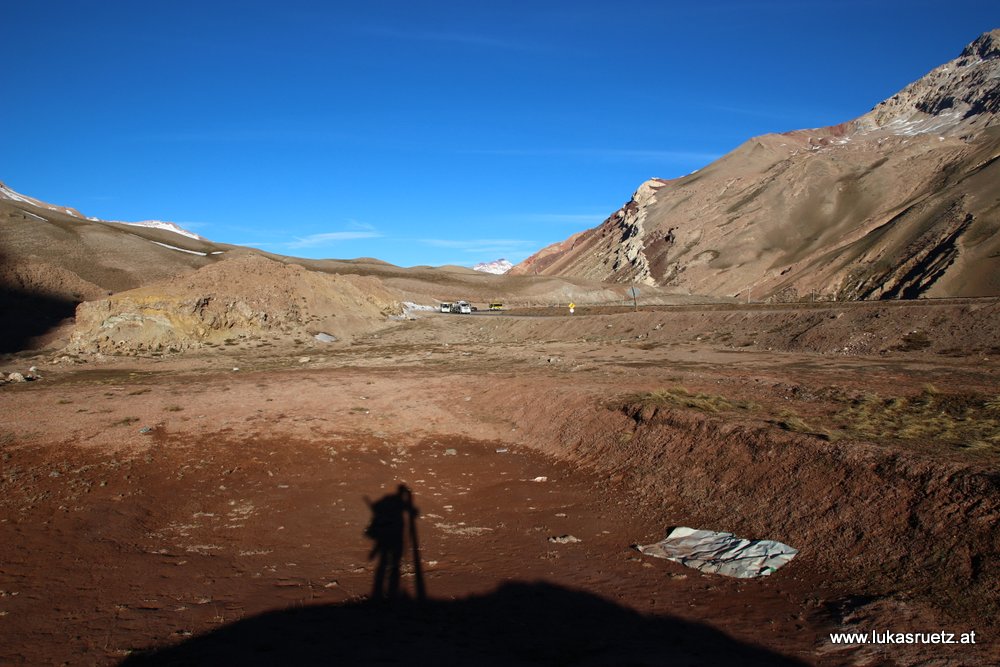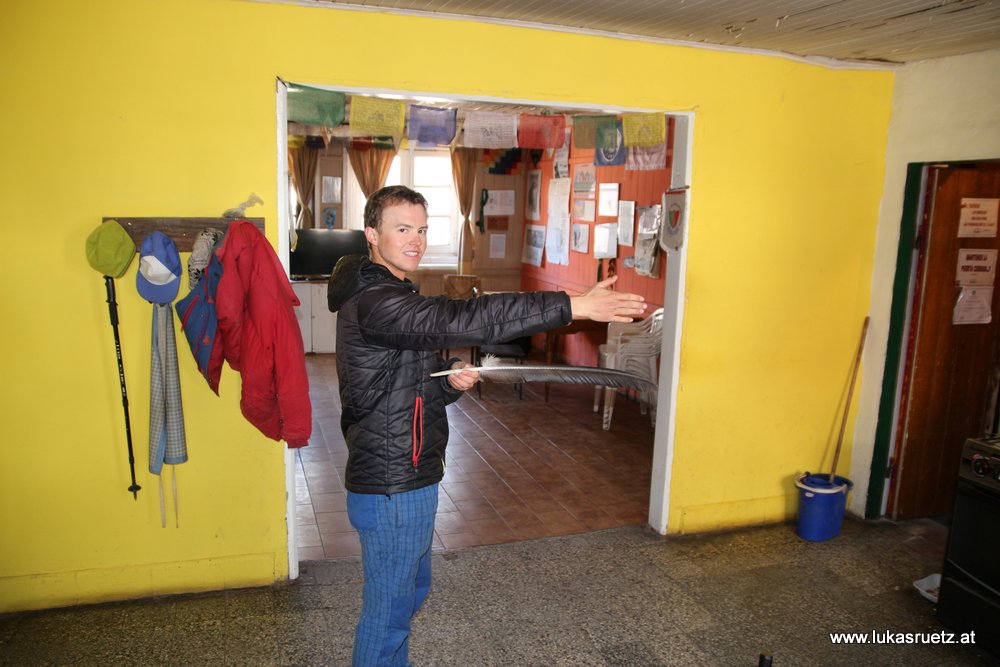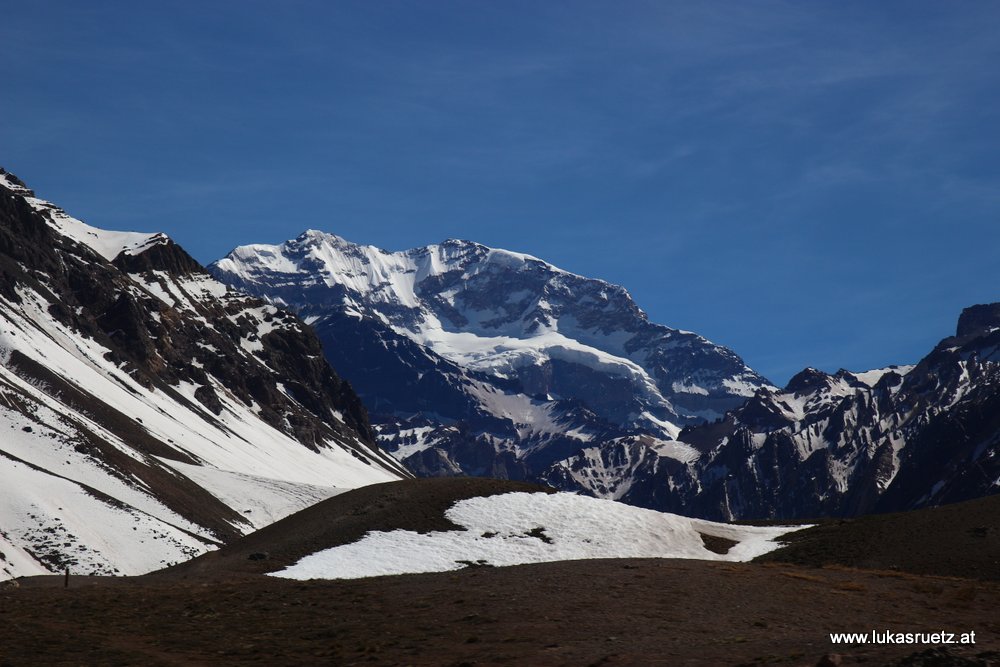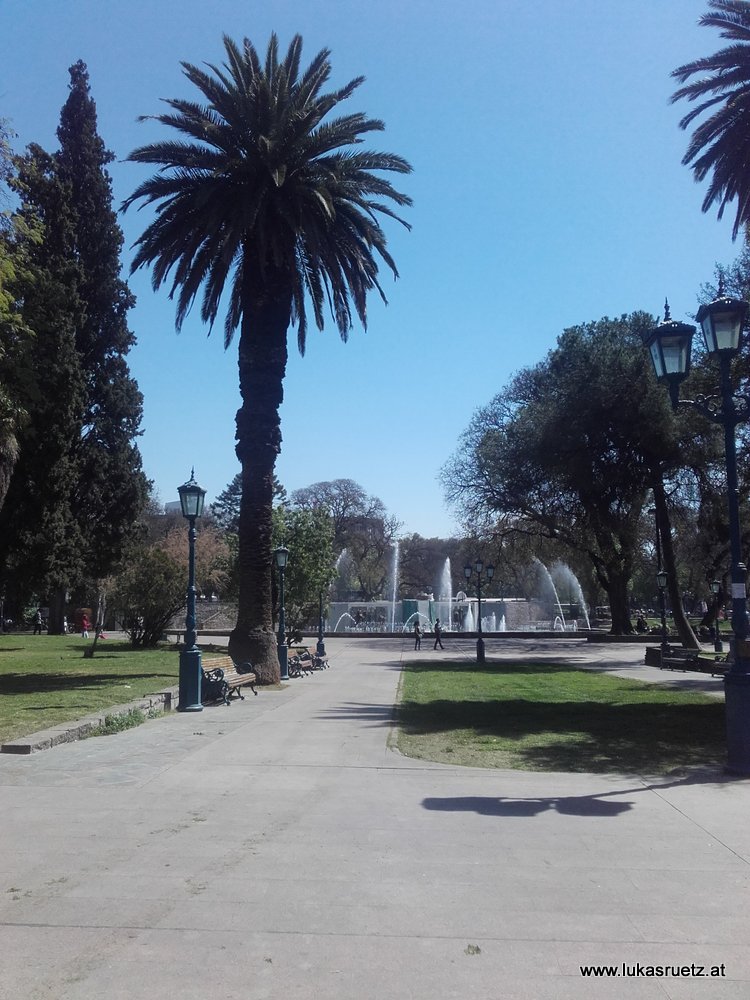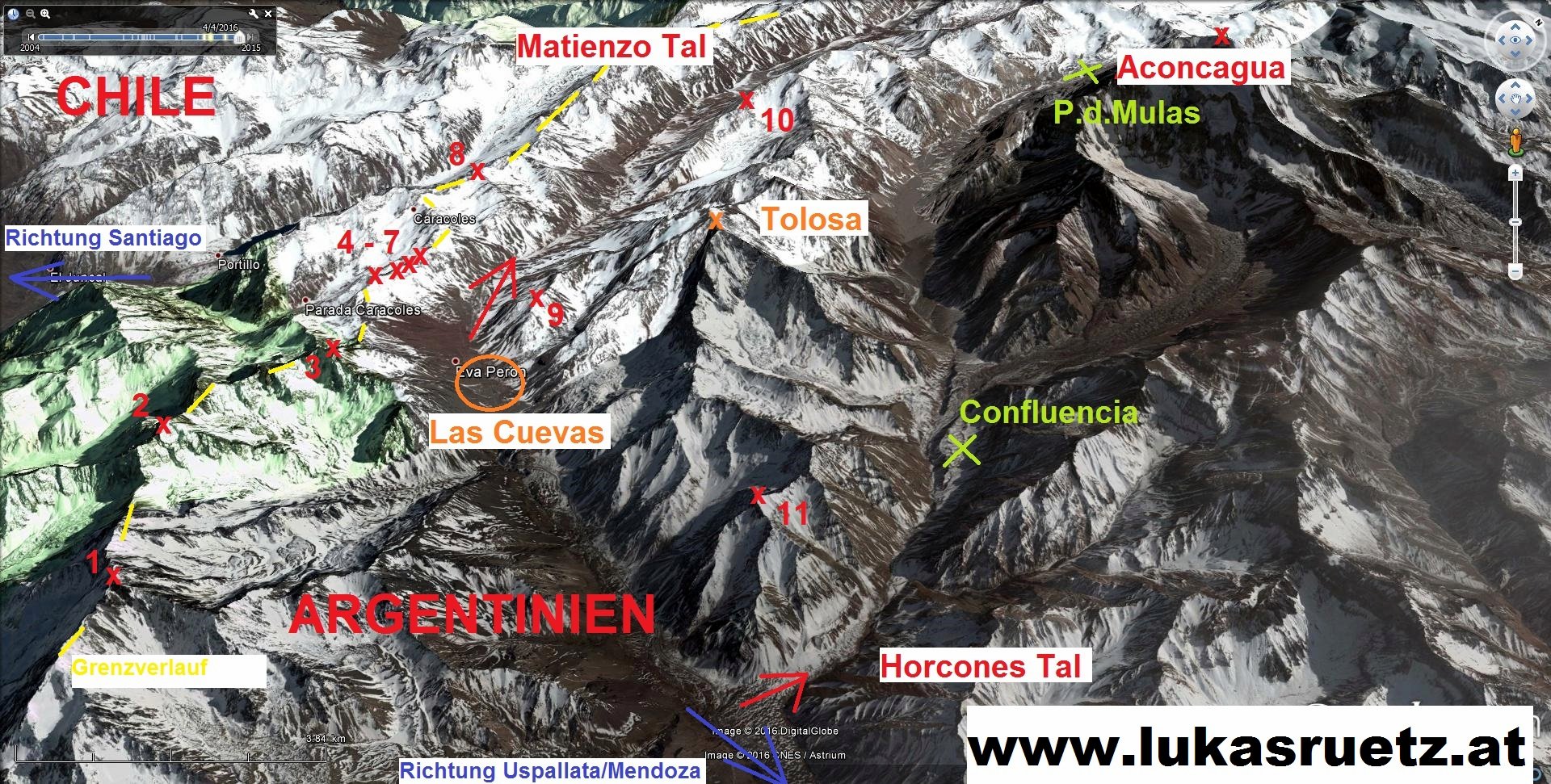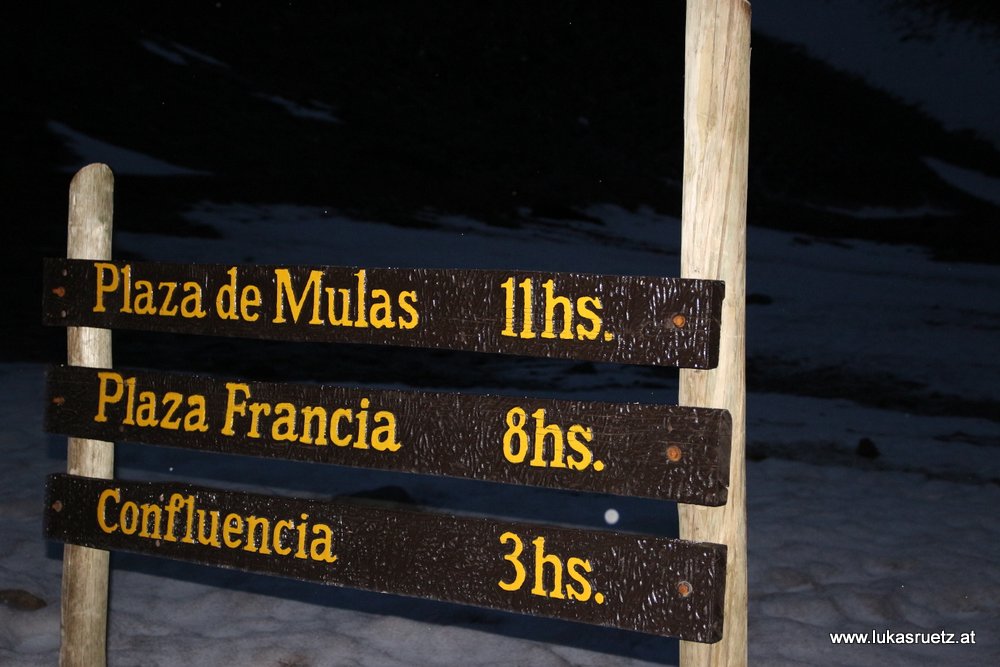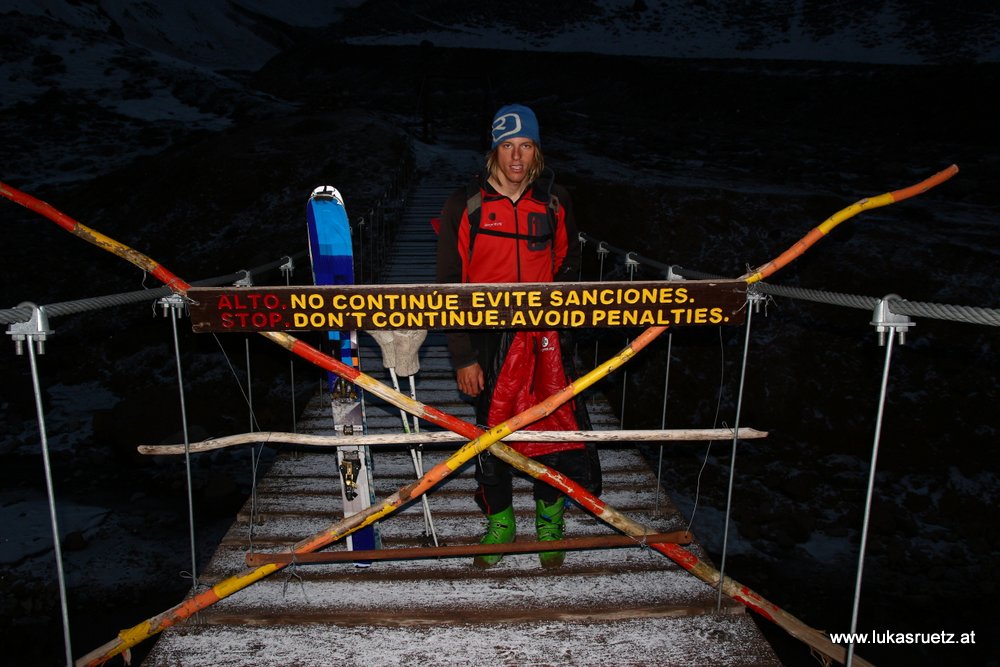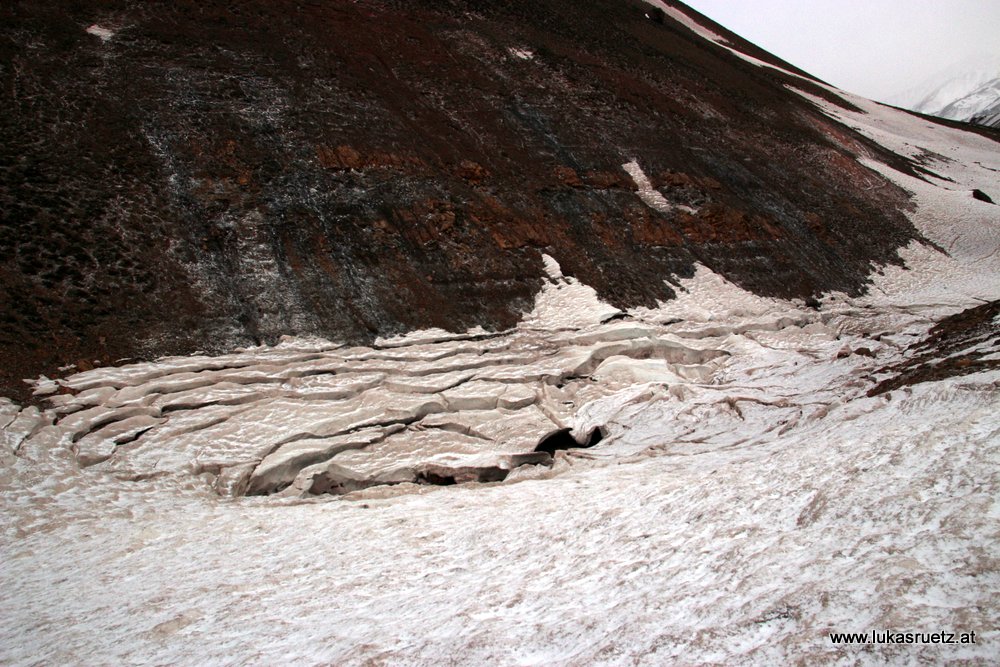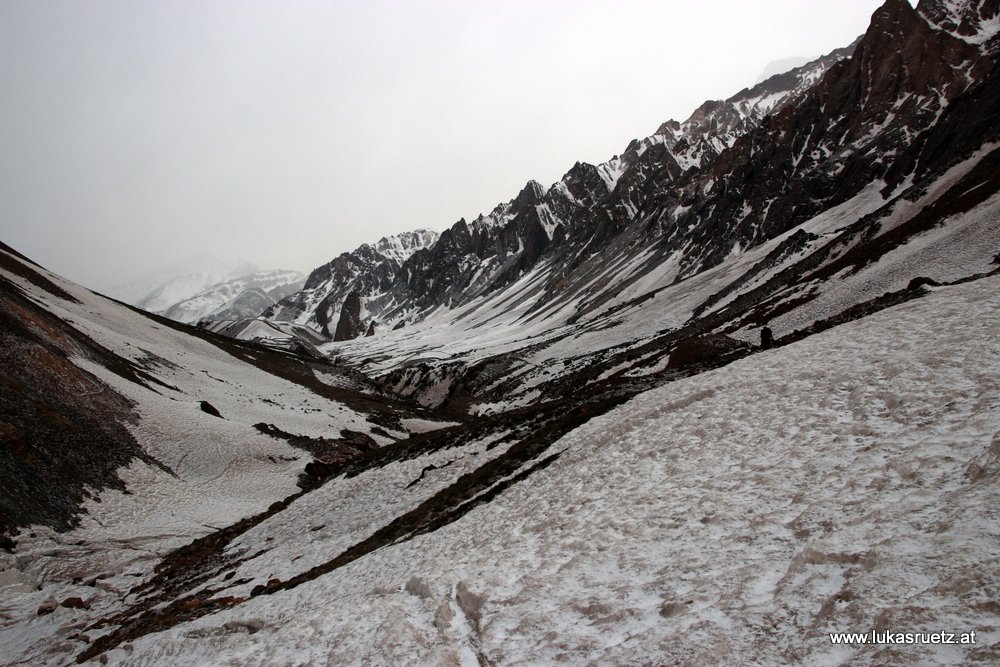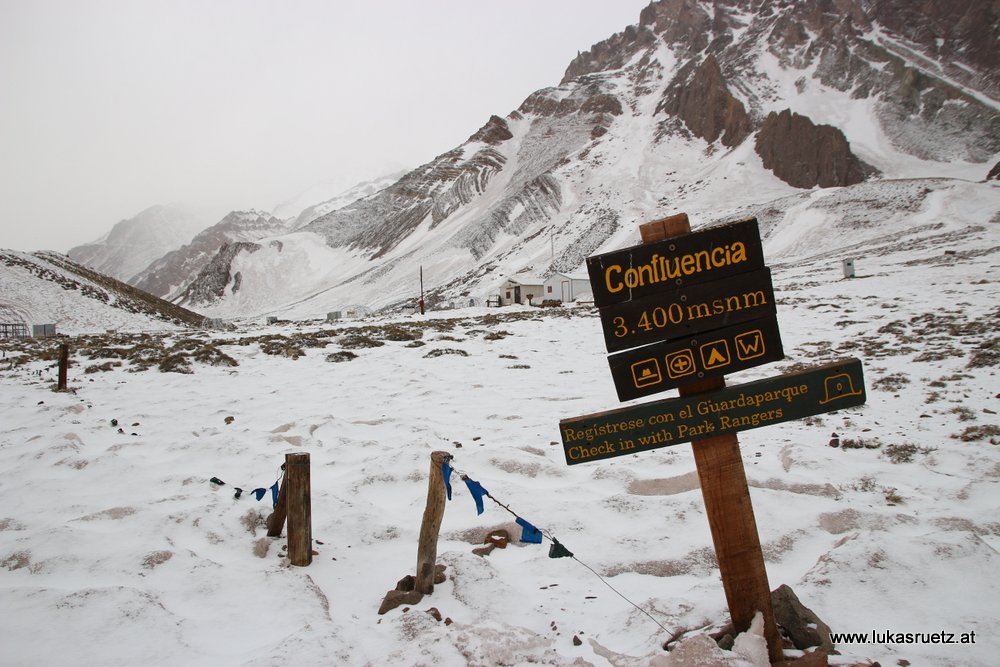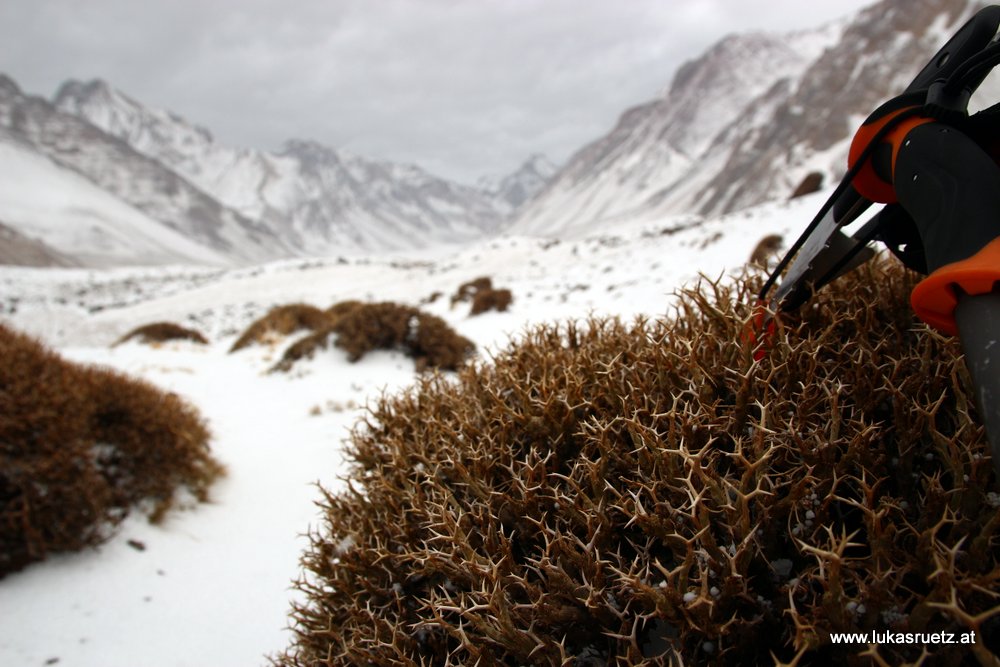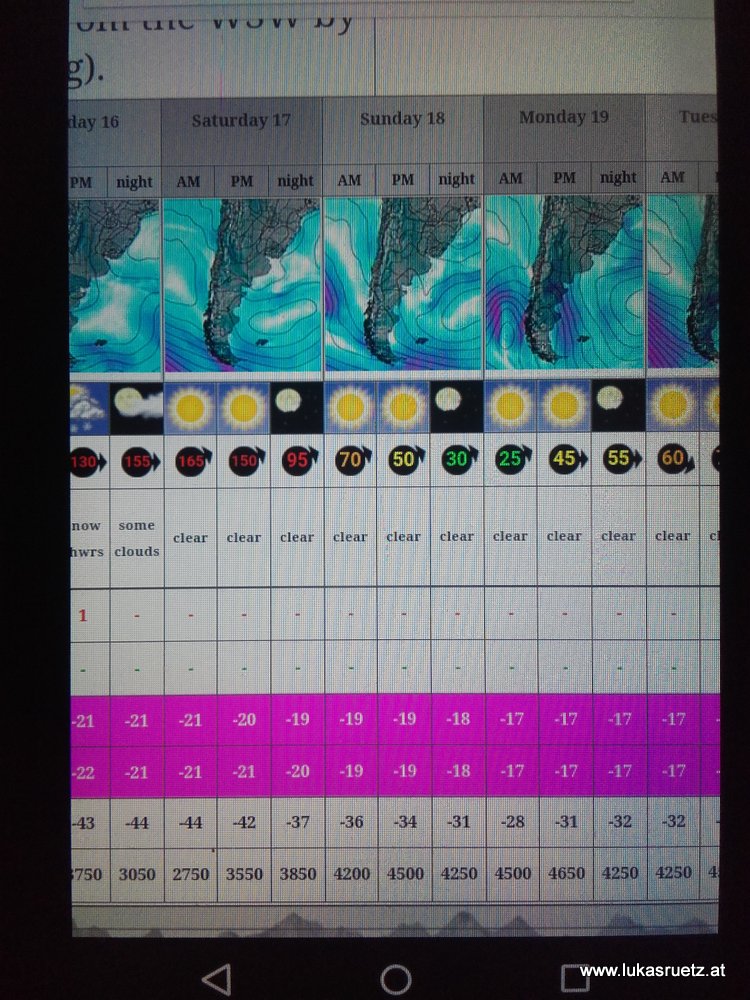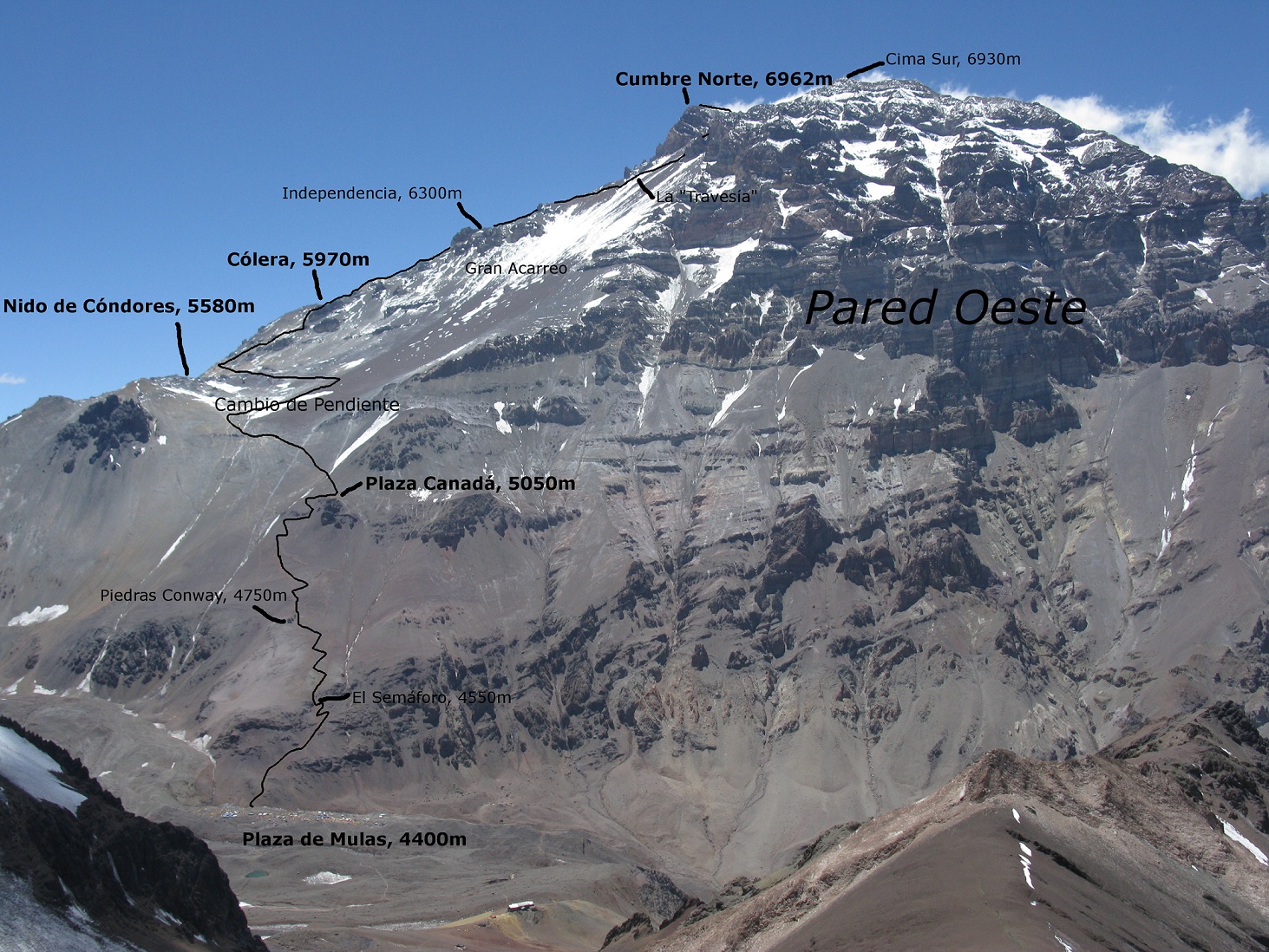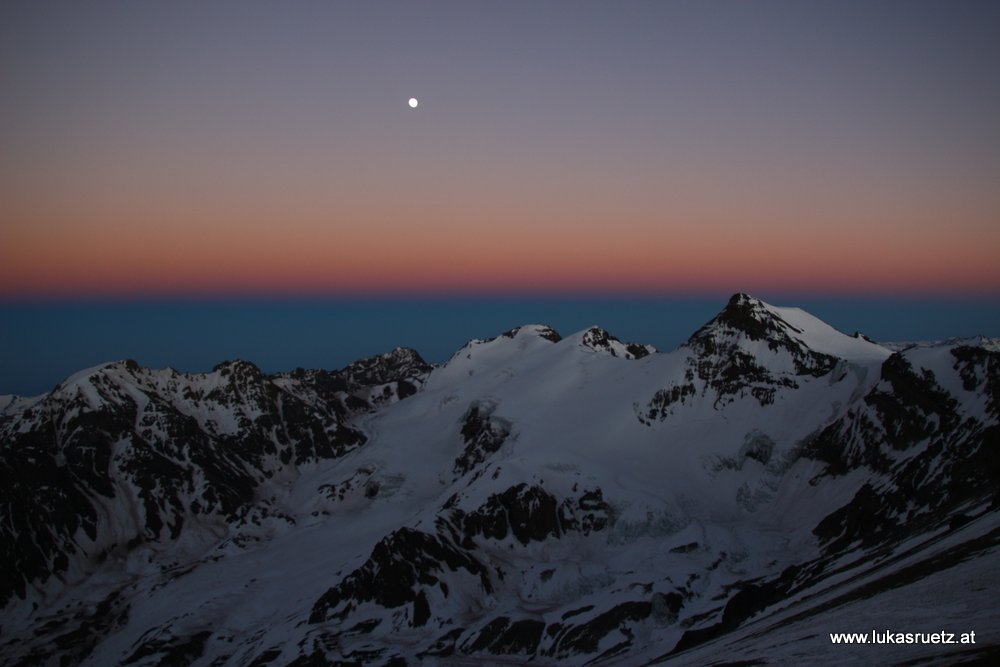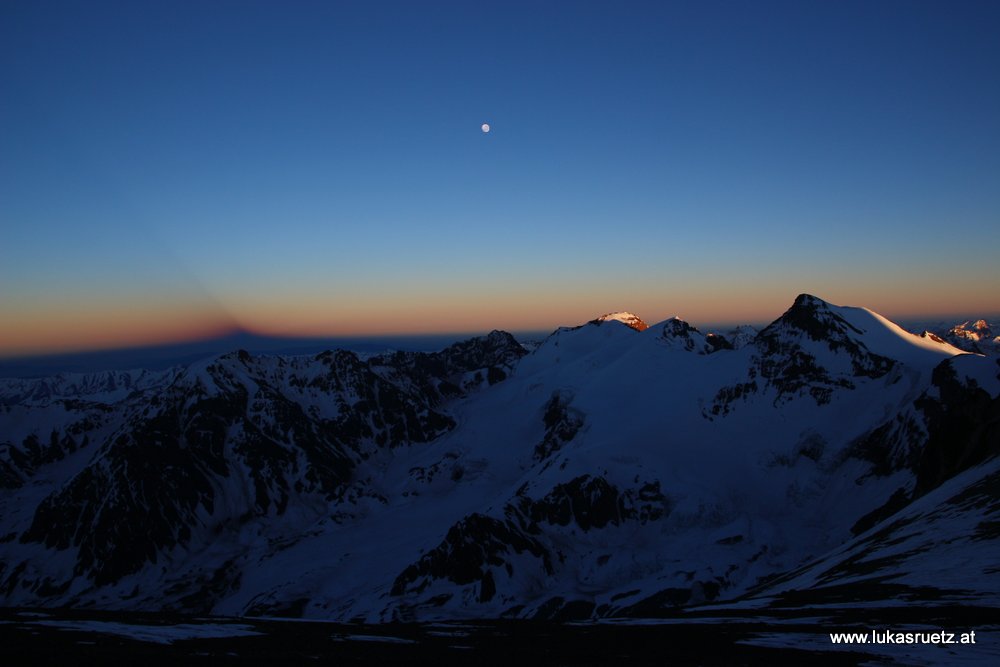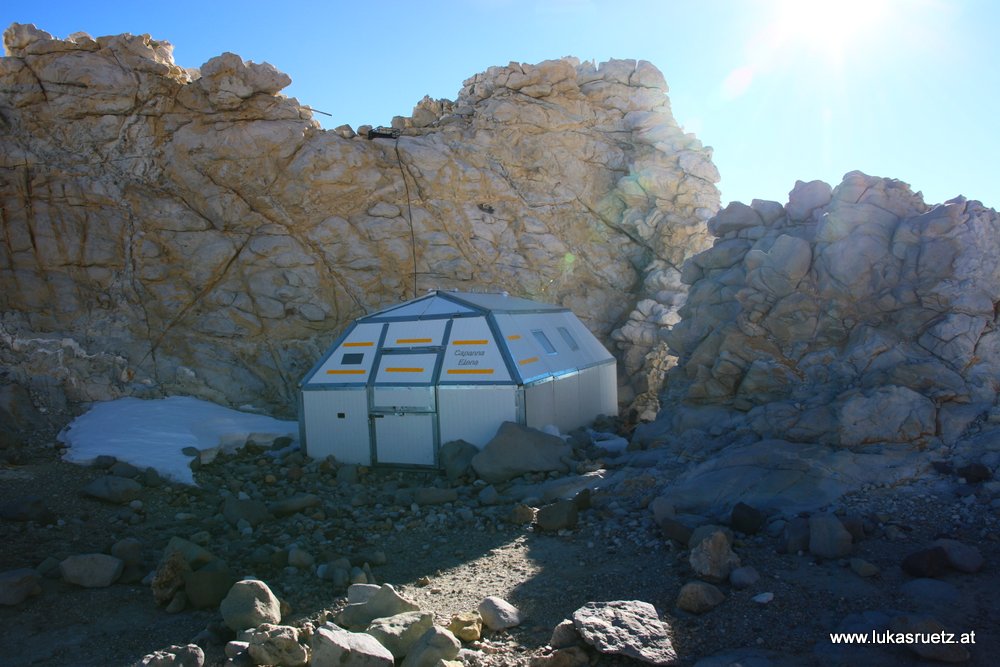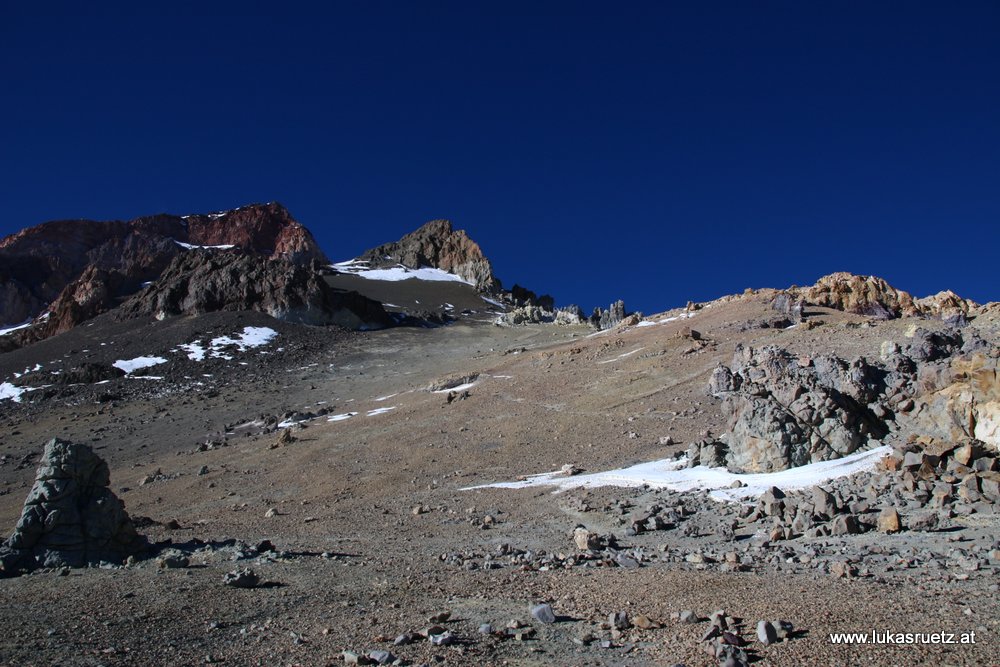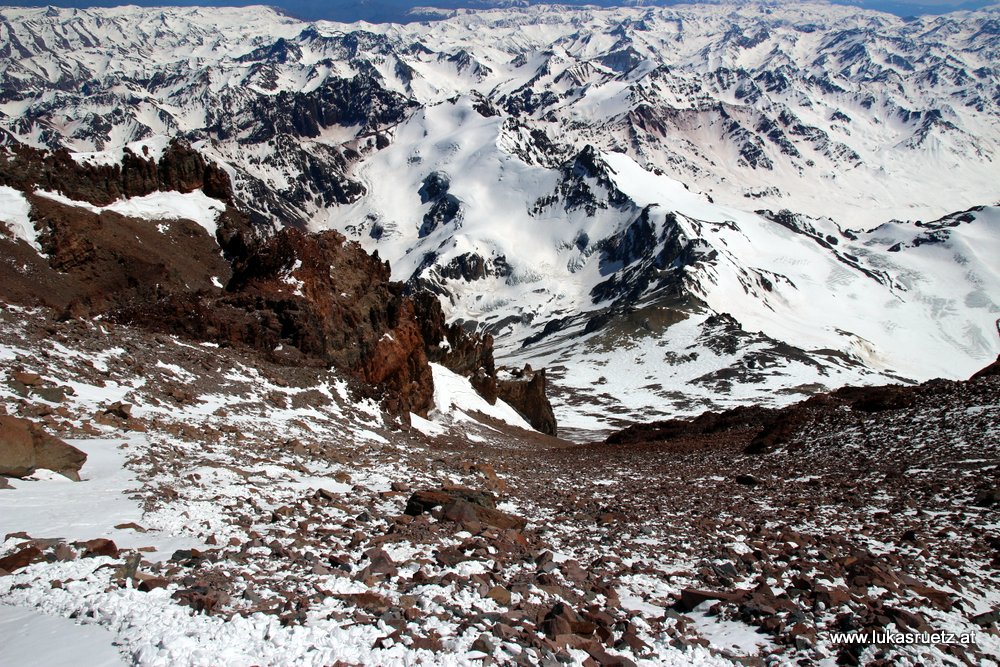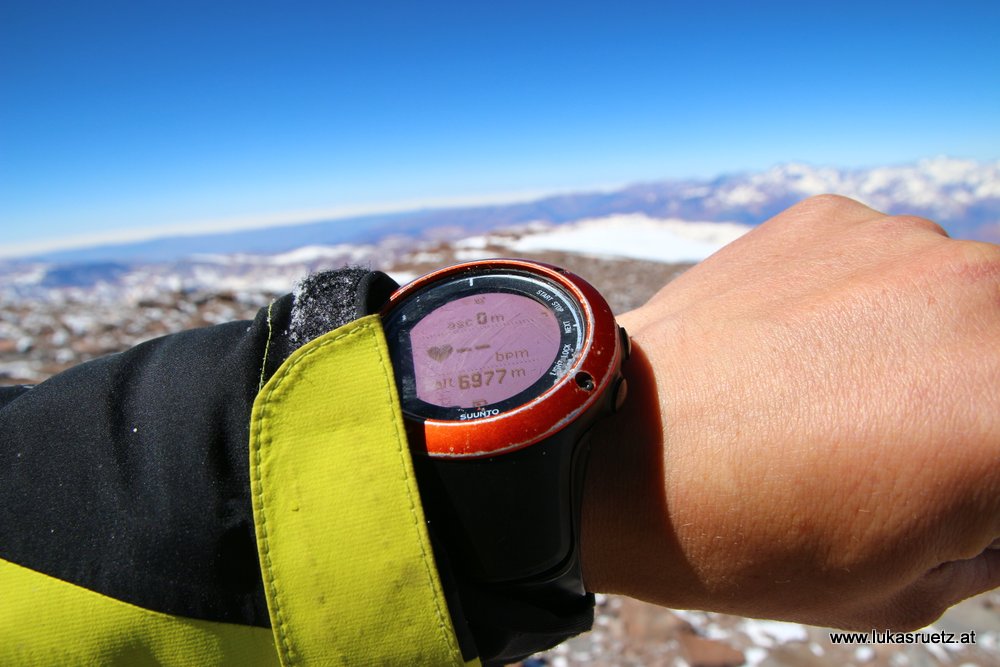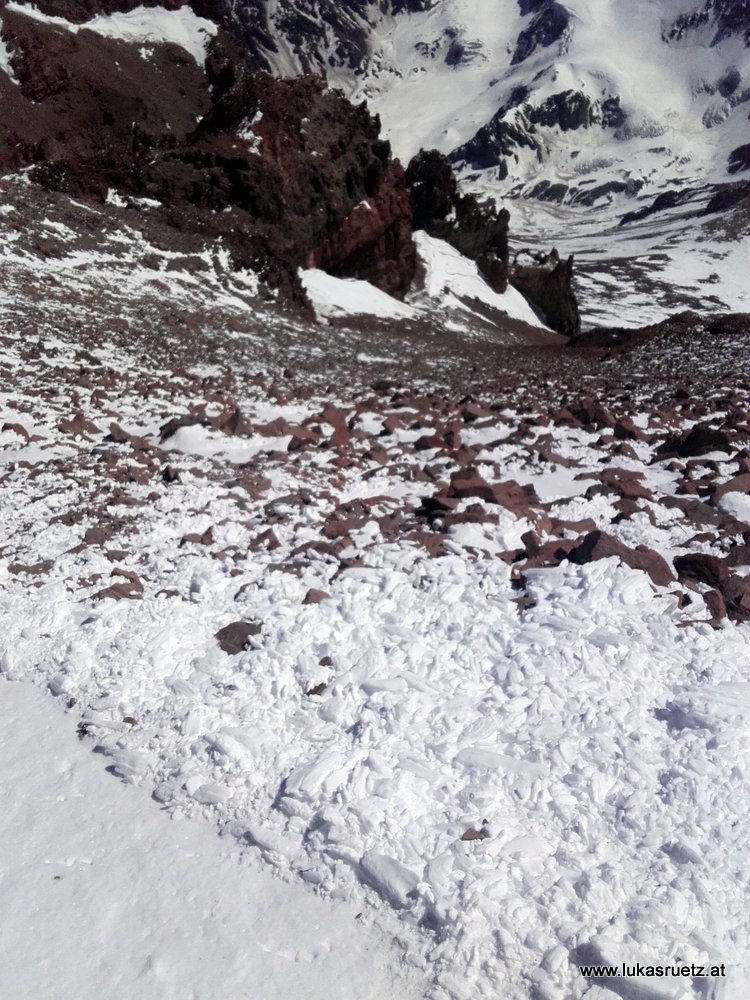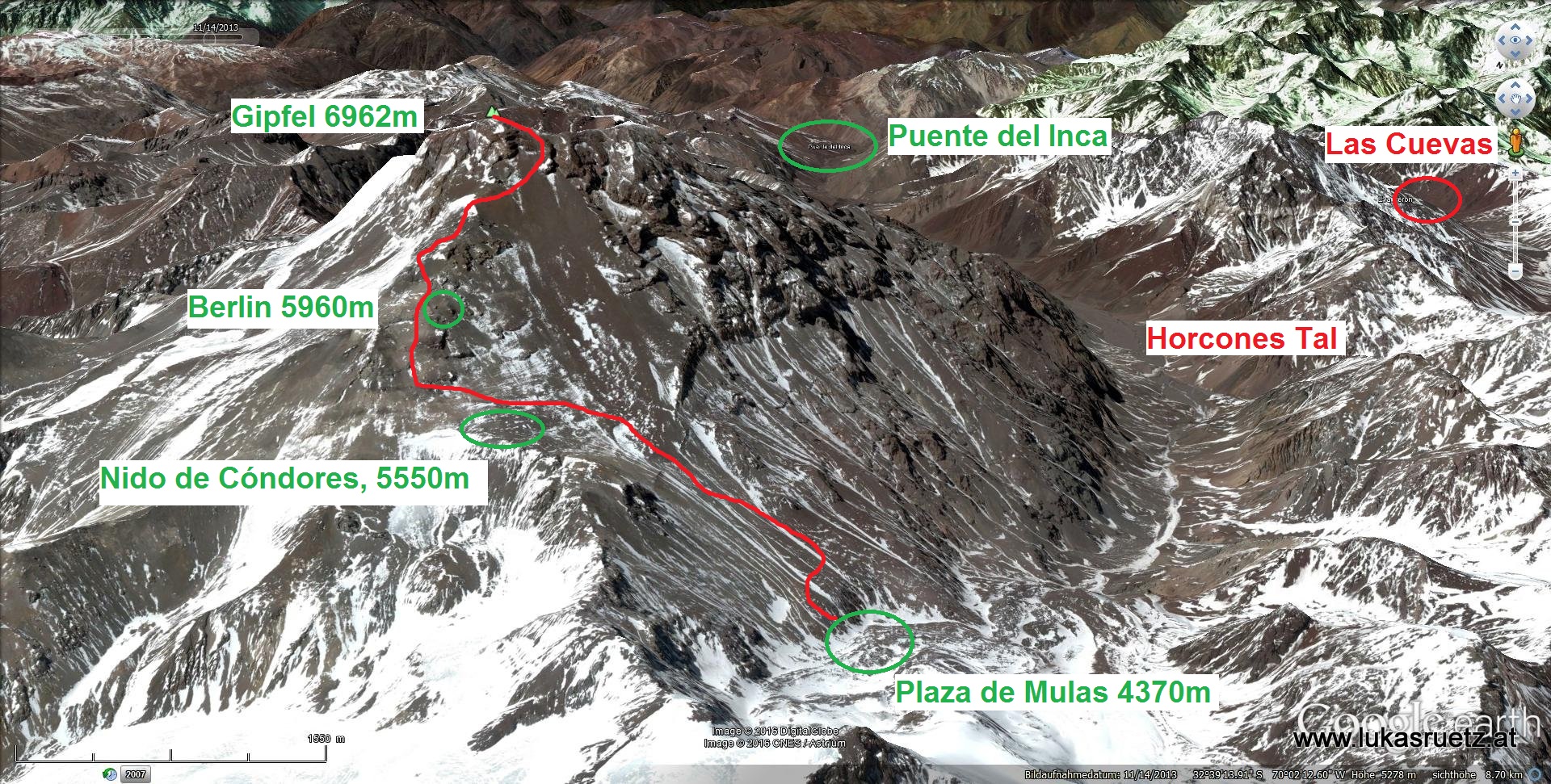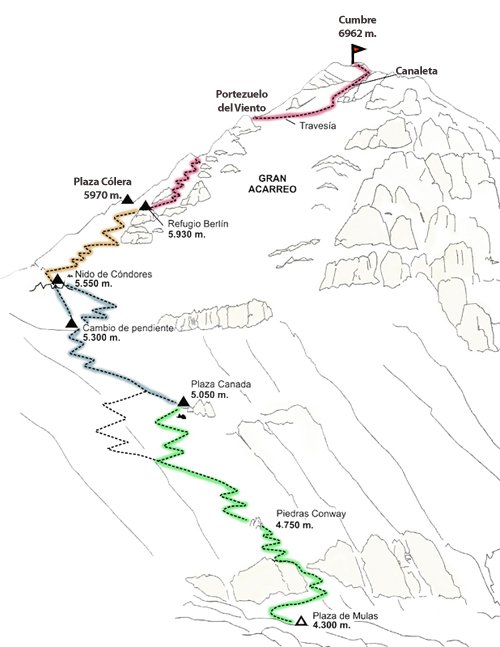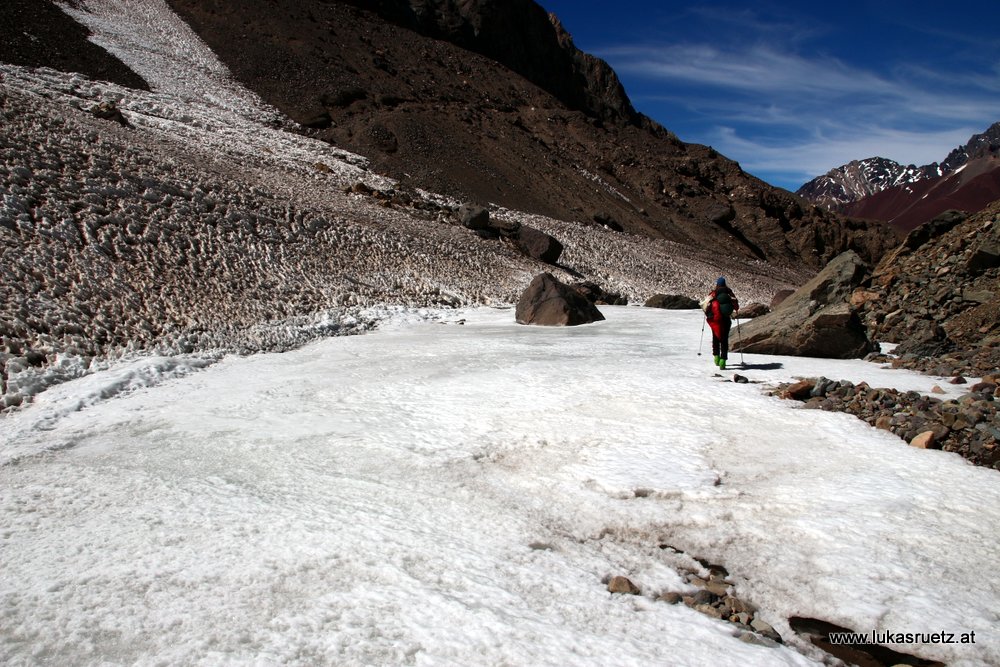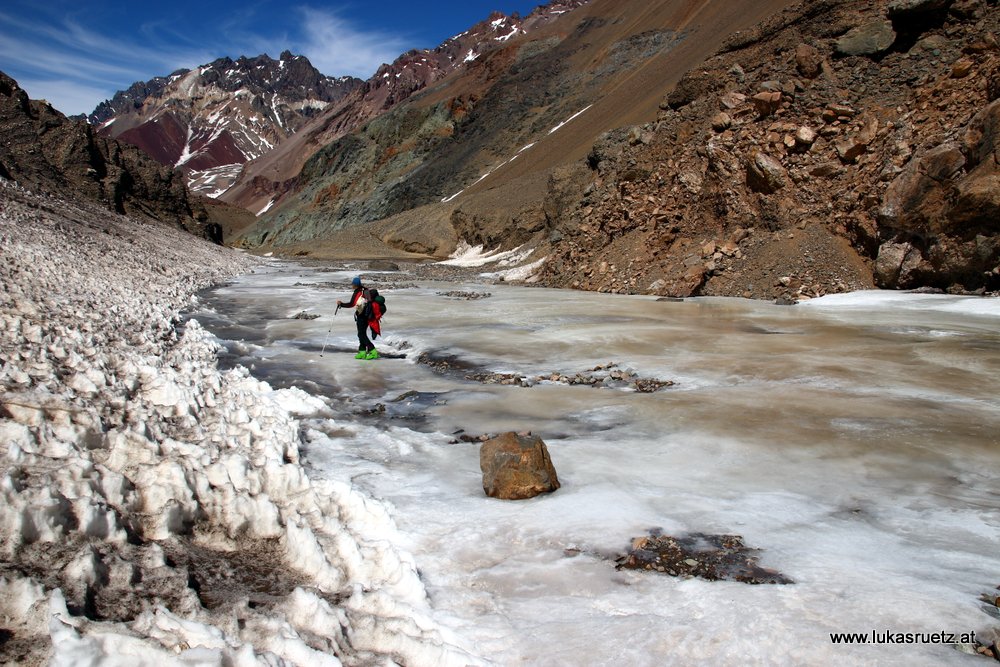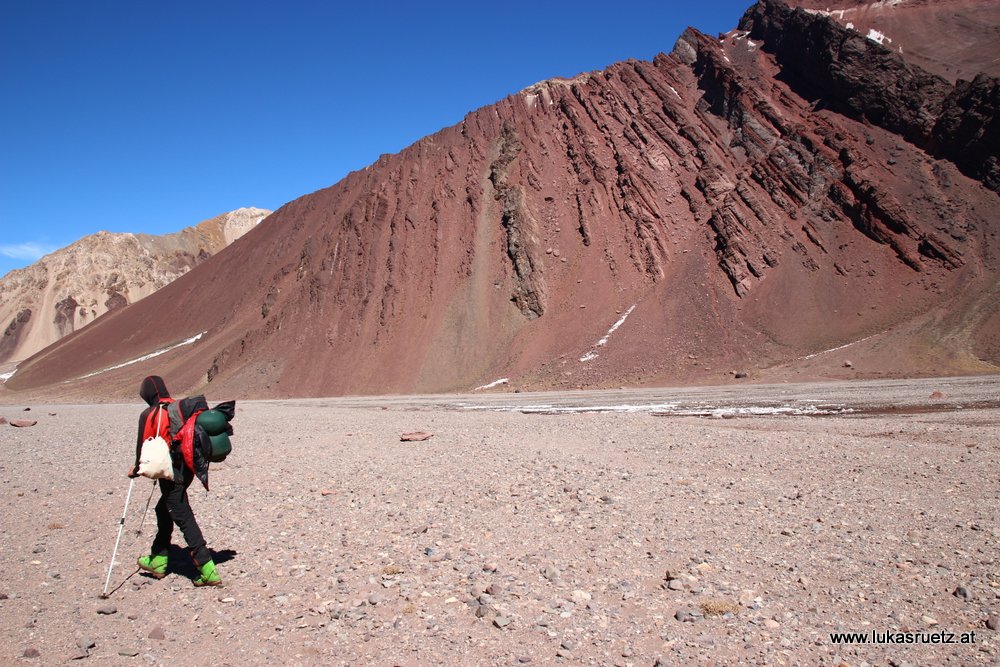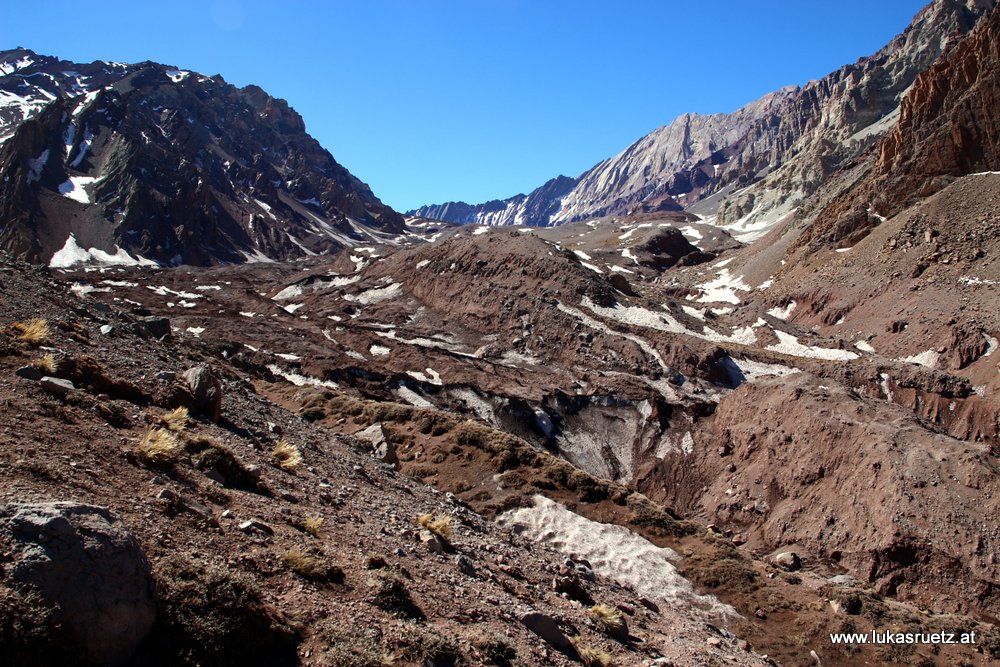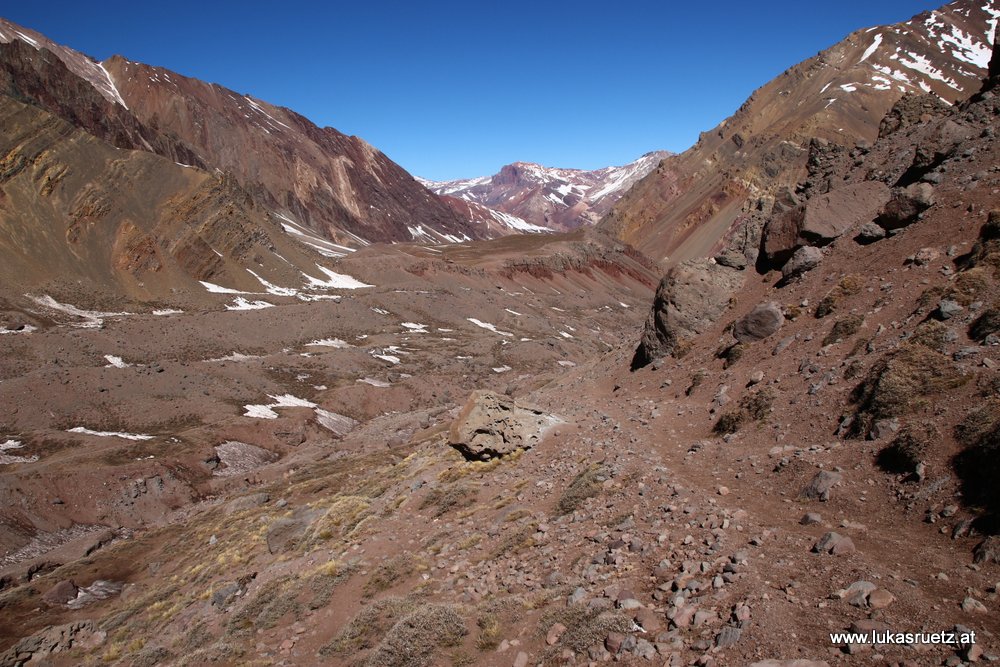[English version from our Aconcagua ascent in September 2016. The whole trip through the Andes in winter 2016 in German here.]
We stayed in Las Cuevas – at the beginning of the Horcones valley in front of Aconcagua – for almost two weeks for skitouring in September 2016. I did not know much about Aconcagua: easy to climb although quite high and actually not skiable cause lack of snow anytime…
During our „acclimatization“ days in Las Cuevas (3150m), Flo and I talked sometimes about a climb of Aconcagua. We saw the peak daily and we could refine our image of the game on the mountains there day by day – especially according to wind conditions. Florian also had maps from Las Cuevas including Aconcagua and we several times measure the distance from the street to the basecamp in Horcones valley.
We wanted to stay a maximum of 14 days in the area of Las Cuevas. Exactly at the end of our stay, the weather forecast turned out to be good for two days. I do not mean clear skies, because there was always before – but only weak winds above 5000m and temperatures rising to -20 °C on peak level of Aconcagua, zero degree limit rising from 3500m to 4500m.
In winter, without mules, without satellite telephone, without altitude medication, without down layers the Aconcagua can be called a risk. But the first winter ascent took place in September 1953. If that was possible at that time, then it should also be possible for us nowadays?
Since the national park, which starts at the entrance Horcones valley, is closed in winter and is monitored by rangers, we had to get in early. Thus, on the morning of the 16th of September, we were at the entrance of the 26km long valley. In the darkness we set off at 2800m along the road. Our 35l backpacks filled to the point of bursting and still equipped with bags on the outside to cover everything necessary. At home at this time nobody knows about our action – only the owner of our hostel knows about it and took us to the valley entrance in the morning by car.
The ranger station is located at the street, which supervises the actual winter restraint of the Aconcagua national park. Since there was a more or less closed snow cover in the area starting at 3100m at latest, we took our skis with us. We hoped to be able to ski at least some parts of the mountain. Aconcagua itself has never been skied completely. There never forms a skiable snow cover because of the strong winds. Only the Polish glacier on the backside allows a few hundred meters of skiing. The highest mountain of the American continent stands out 2000 meters from the surrounding mountain landscape and is a good point of attack to the wind.
The entire valley was more or less snowless. This damn microclimate around this mountain! Only the stream bed often was filled with snow, but due to the surface structure it was absolutely not skiable. Thus we left our skis before we reached the basecamp.
At Plaza de Mulas we found a well anchored tent which was filled with clutter. Even more incredible: in the tent were exactly two mattresses. We freed our home from TV antennas, camping chairs and tables until we had exactly enough space to take the two mattresses next to each other on the floor.
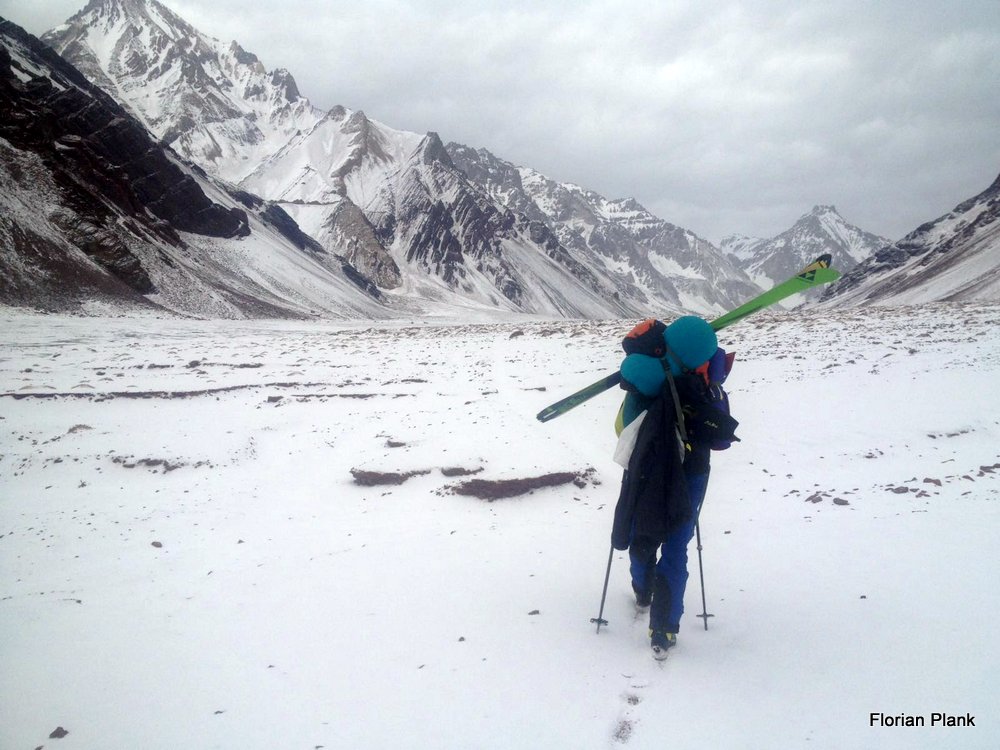
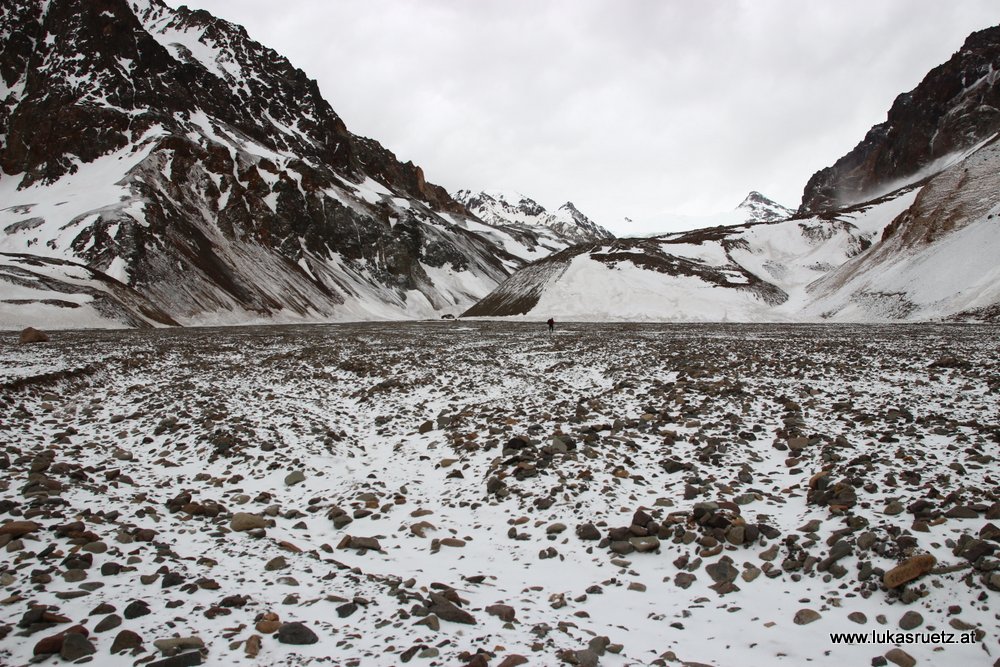
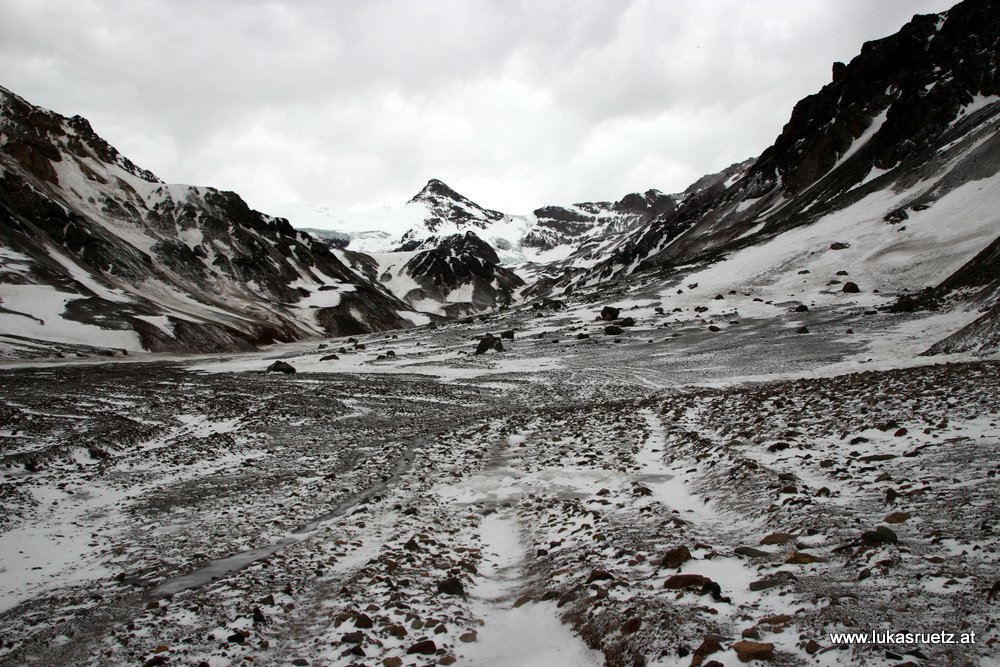
The next day sky was clear again but the wind continued to be stormy. We sat in the tent, searched for clean snow, melted it, and cooked the Knorr-instant meal. In addition, we always stared at the photographed weather report on the screen of my mobile phone. Tomorrow, on September 18, the windspeed should slow down, the zero degree limit will rise to 4500m in the afternoon – tomorrow or never!
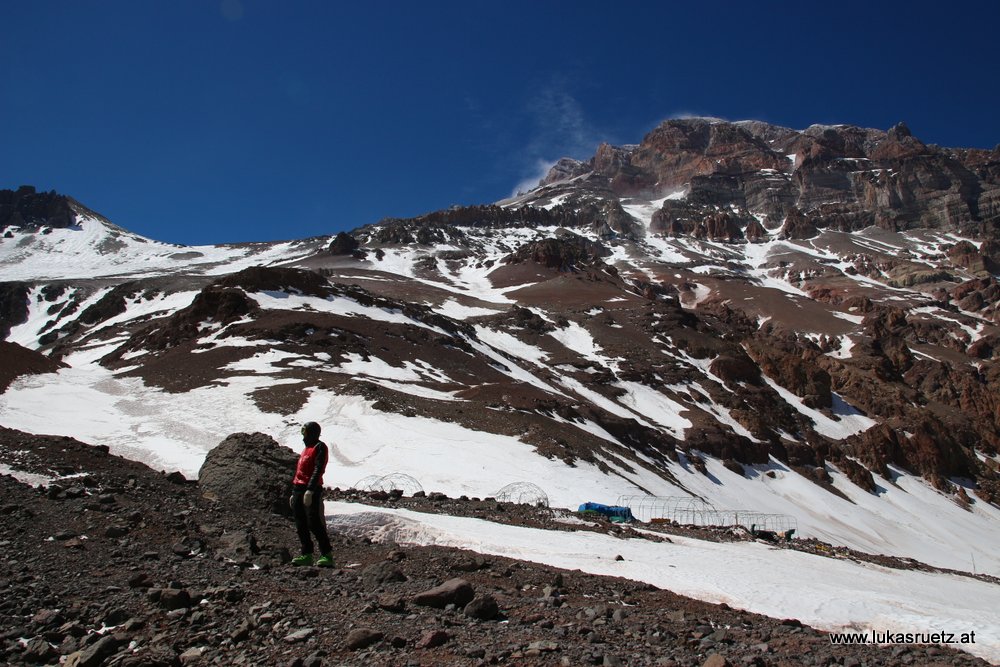
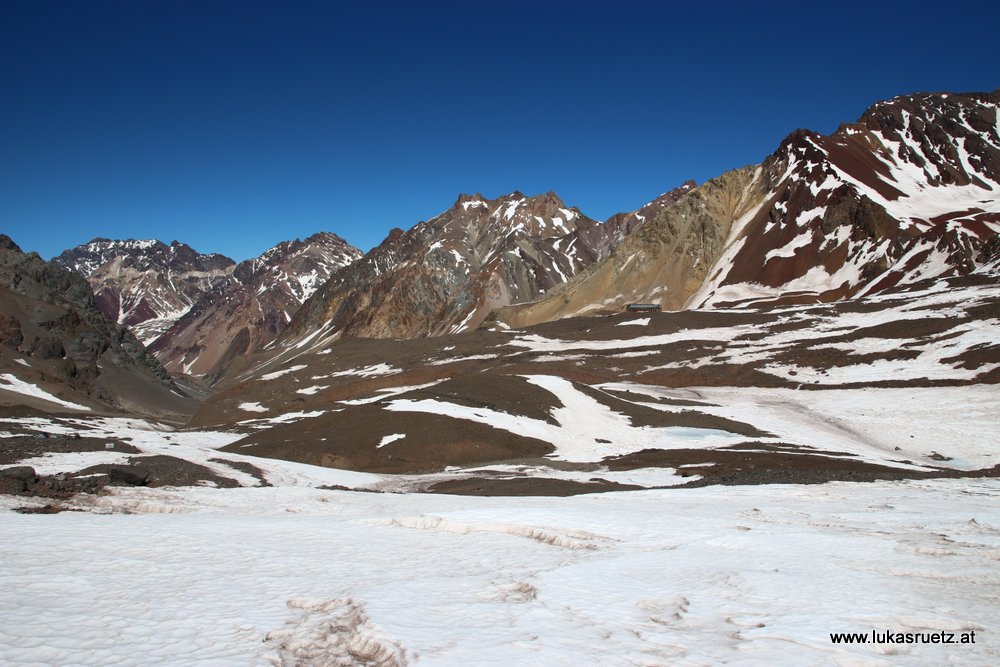
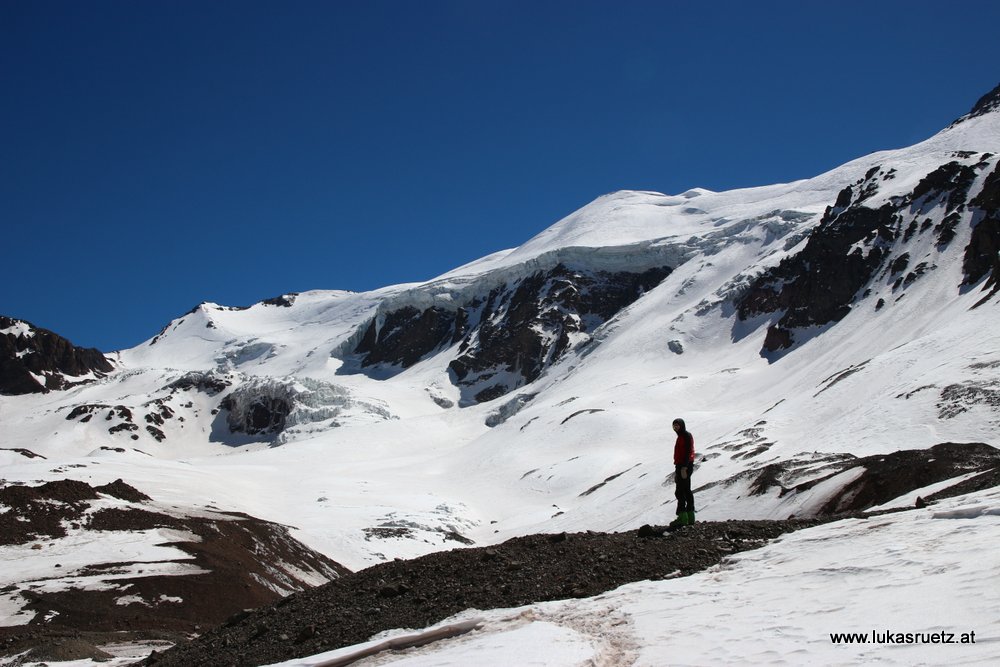
Ascending to one of the numerous bivouac boxes we consciously didn’t want: We were cut off from the outside world, in between 26 kilometer of walk and we had no medication apart from the standard travel pharmacy. To risk a high-altitude disease through a night on one of the boxes above 5900m would be too dangerous. We prepared everything for the day ahead. The time limit for the summit arrival we set at 3:30 pm – if we are not up until then, we will turn around. I reckoned that I need ten hours to reach the summit (five hours for the first 1600M+, five hours for the next 1000M+). But since we had no experience of the altitude, these were only rough estimates. At 03:45, after another stormy night, the Tirol Concerto sounded quietly from Florian’s mobile phone.
We started at 4:00 into the moon night. The wind was continually falling. From 5000m I went on at my pace. There was almost no snow above 5300m – from here the wind comes full force all year long. Shortly afterwards on the Nido de Cóndores, I saw Flo for the last time behind me. At the Refugio Berlin (a total of three tiny wooden boxes for two people each) at about 5960m I entered the sun for the first time, ate some of my nuts and drank some water. Starting at 5500m I had to stop somtimes. Interestingly, the low air pressure is not noticed in the lungs or in the breathing itself but only in the immediate fall of the oxygen saturation in the body. Slowly I reached the summit and the storm of the night had now weakened to a slight breeze. The snow on the trail was ideal for the ascent with crampons: hard-packed. On the last few hundred meters of altitude in the so-called Canaleta, the stones became larger. After 8h 32′ and 2590M+ I finally reached the summit on 18 September at 13:22 and the wind completely falled asleep at the same time. It was not very cold, the weather report fit. I just changed my finger gloves on my mittens – I did not even need to put several pairs of gloves on top of each other.
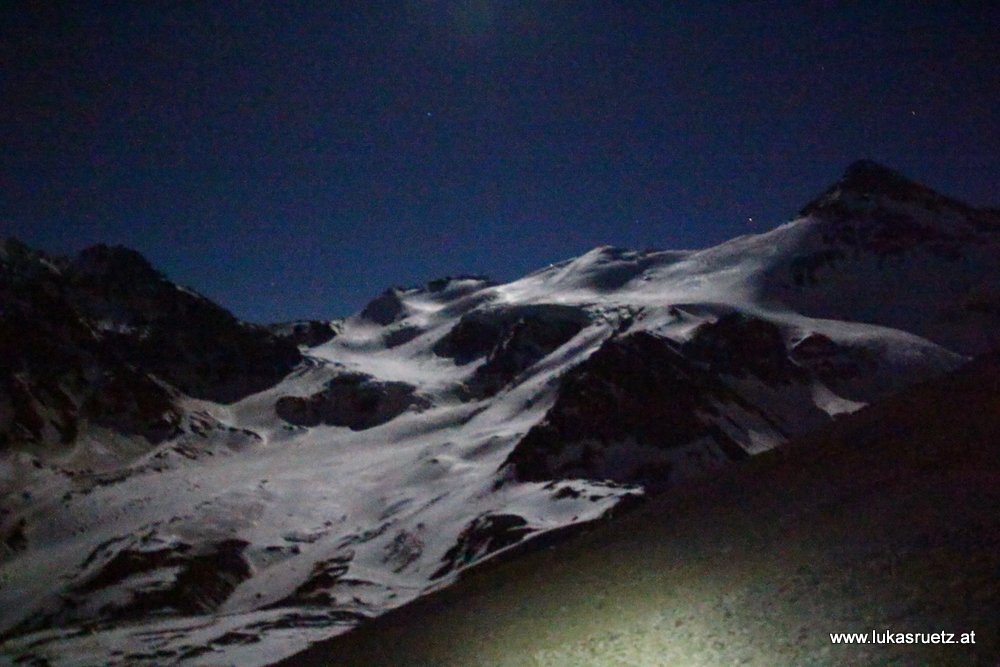
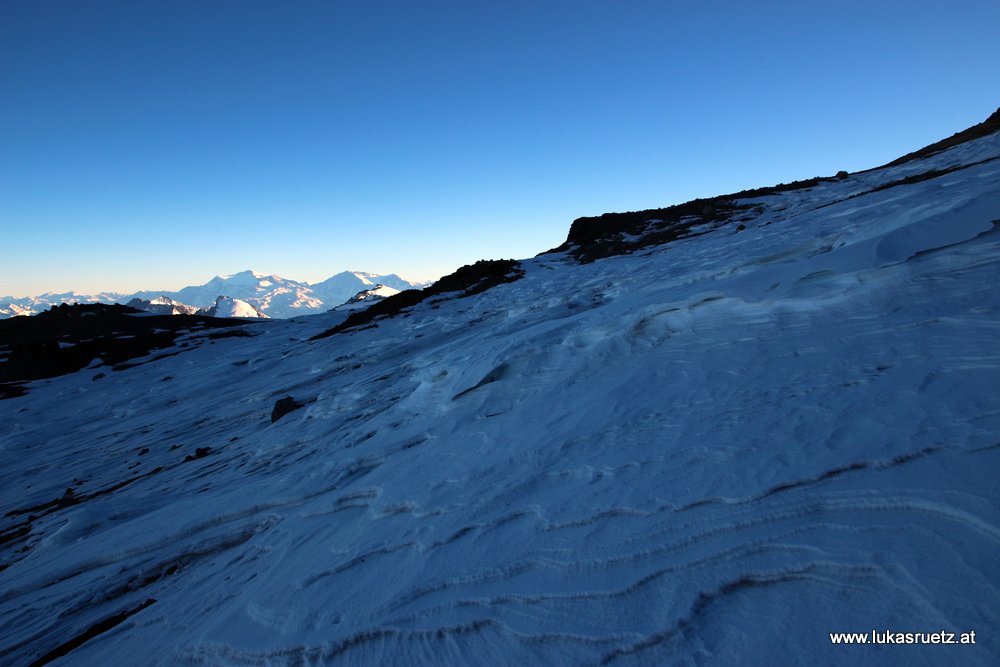
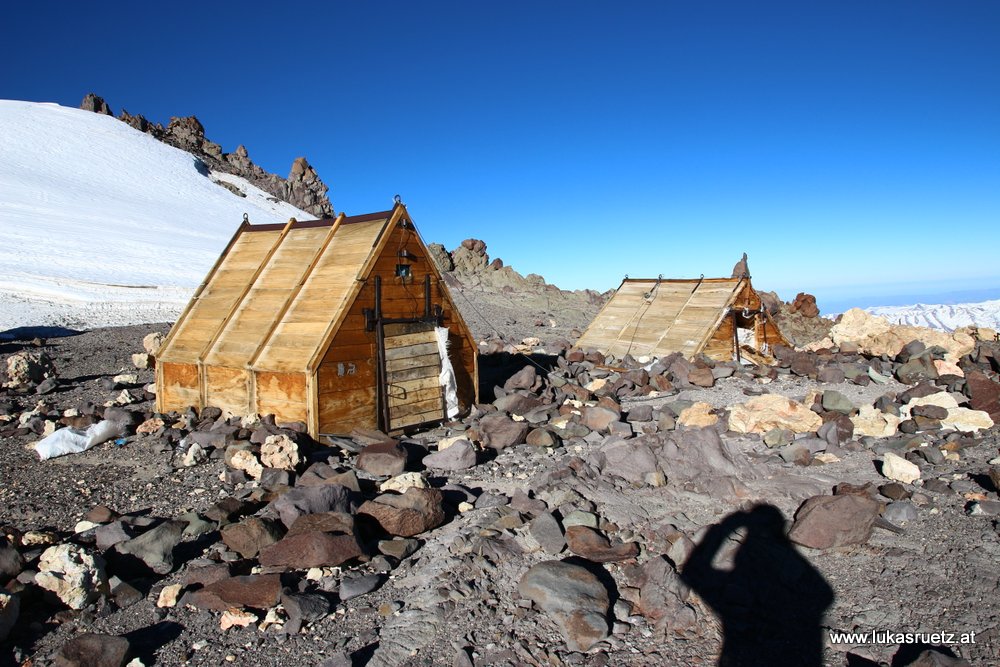
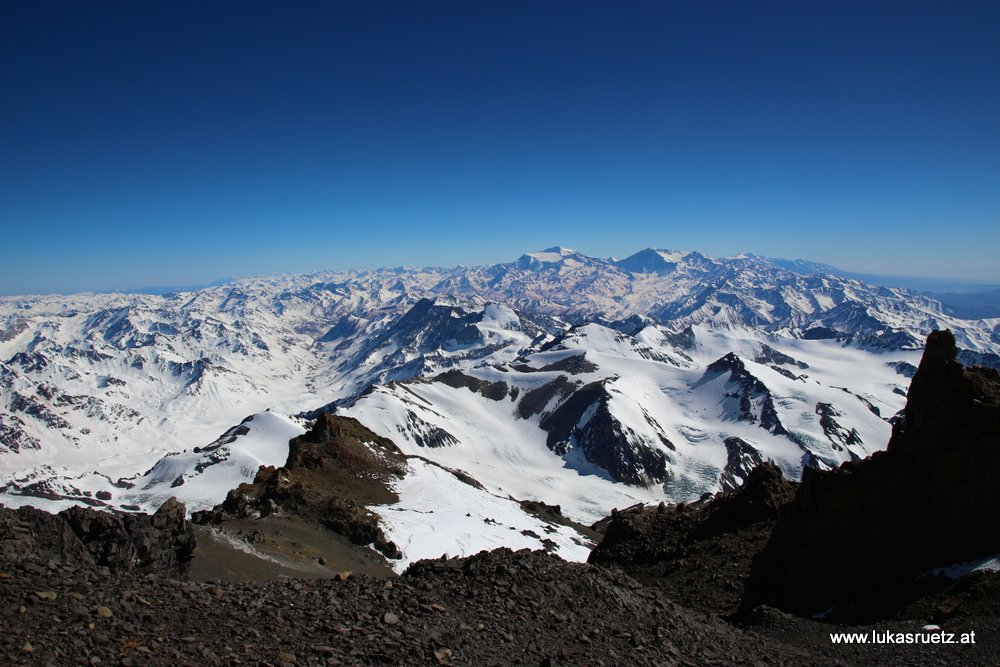
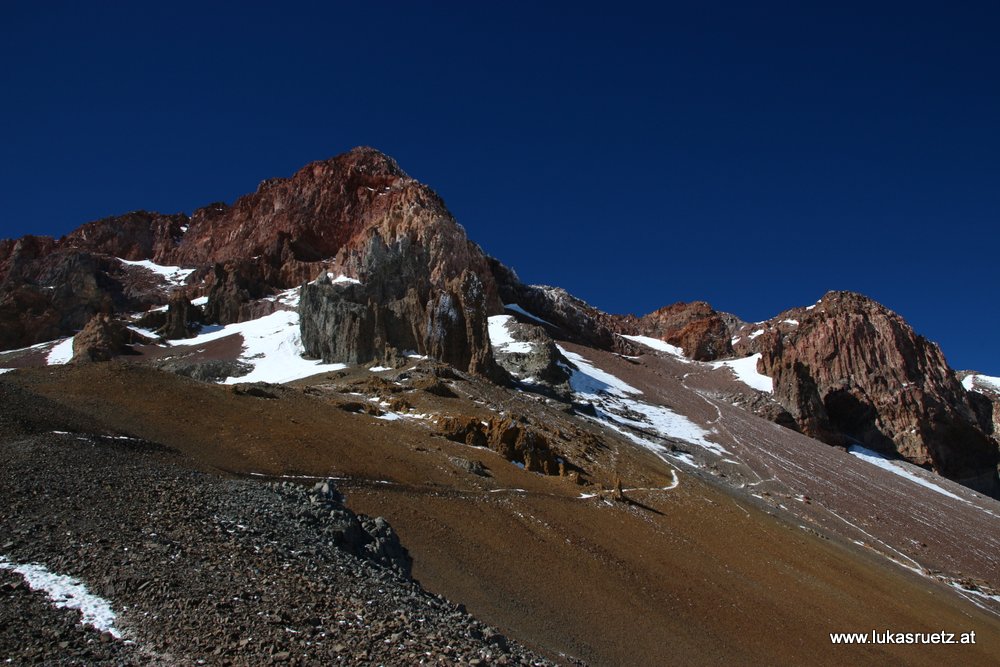
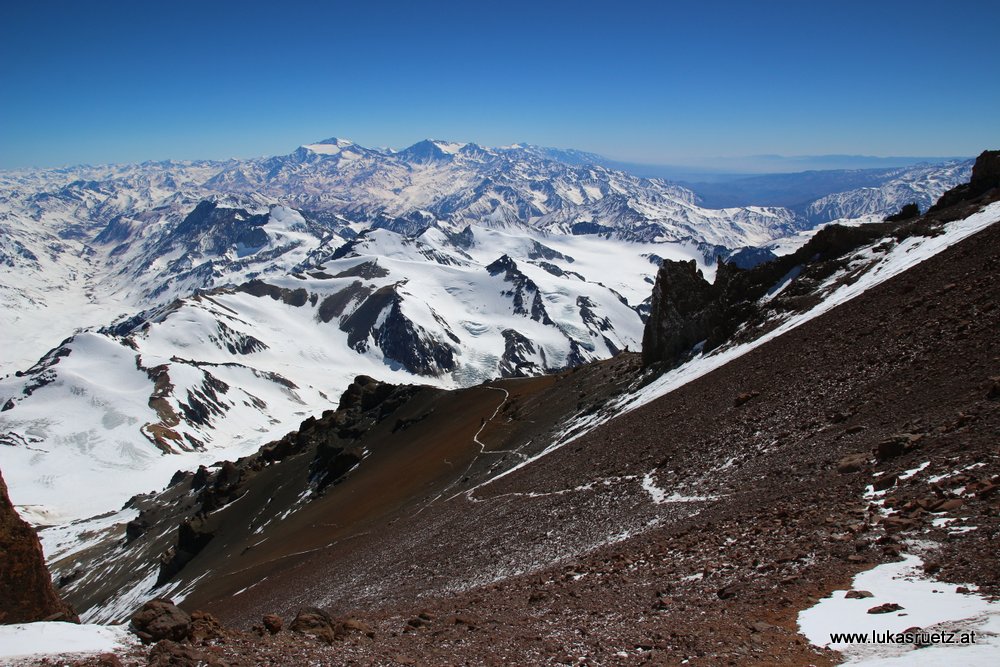
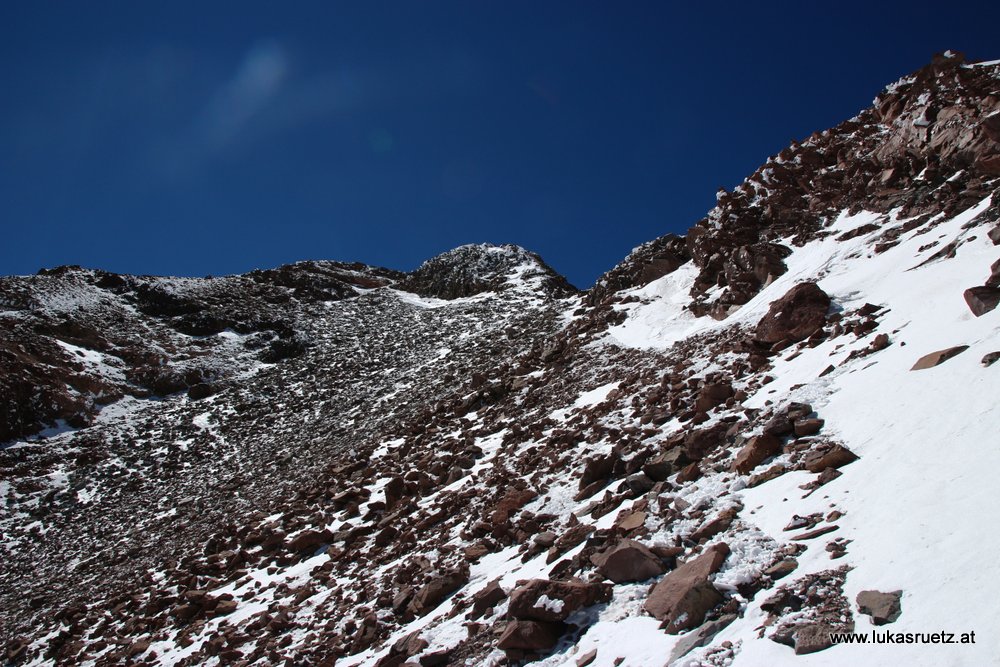
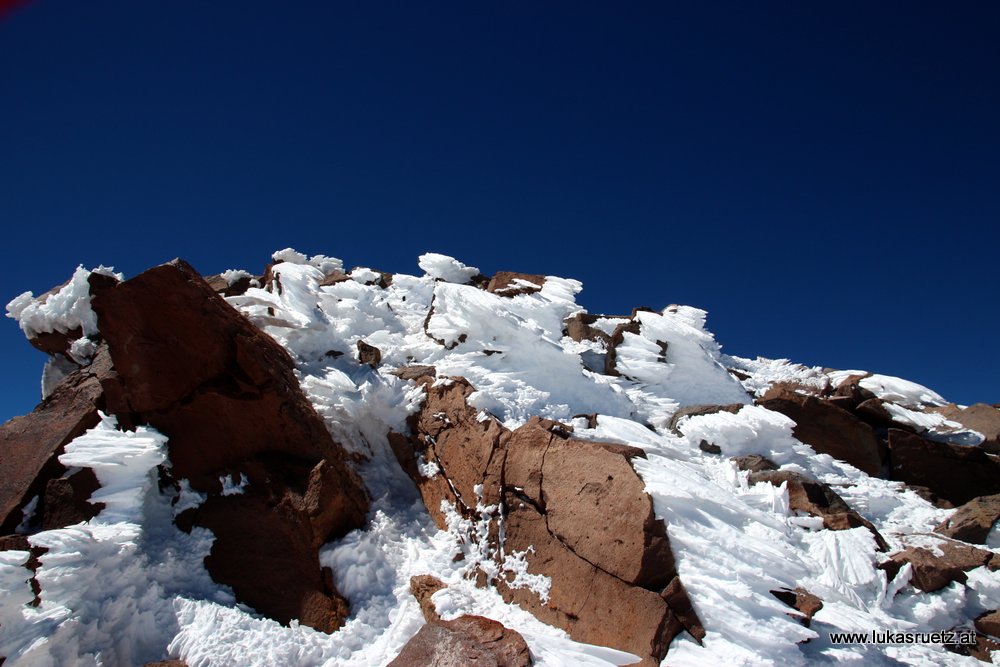
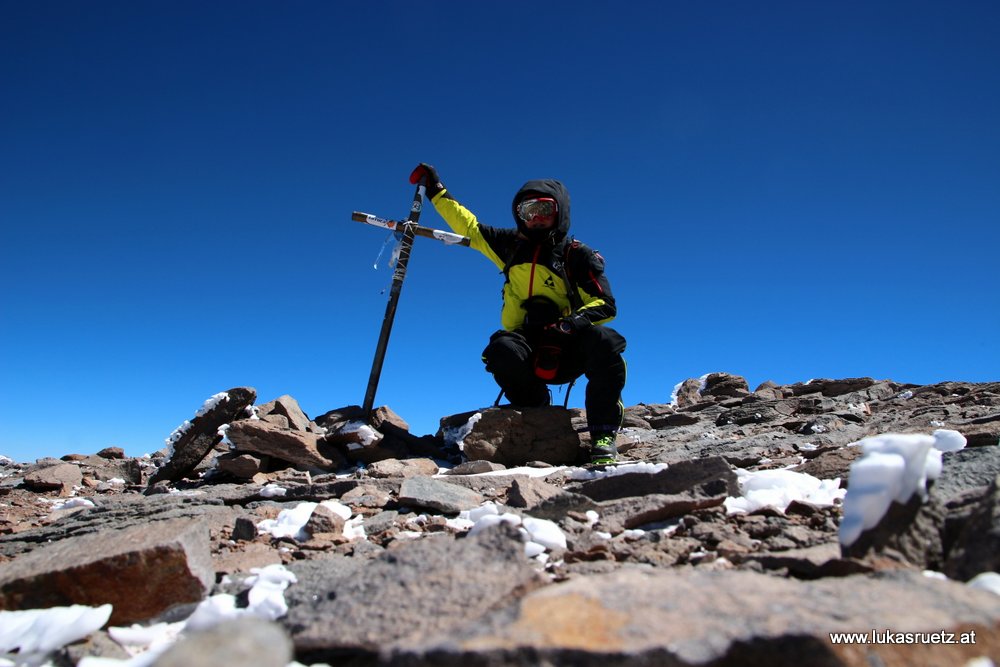
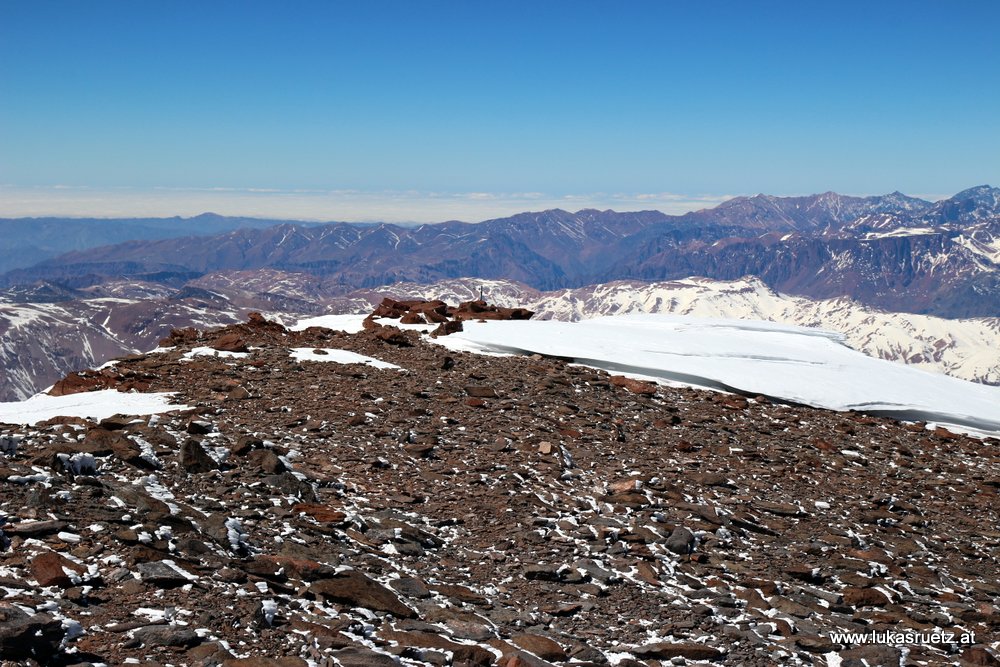

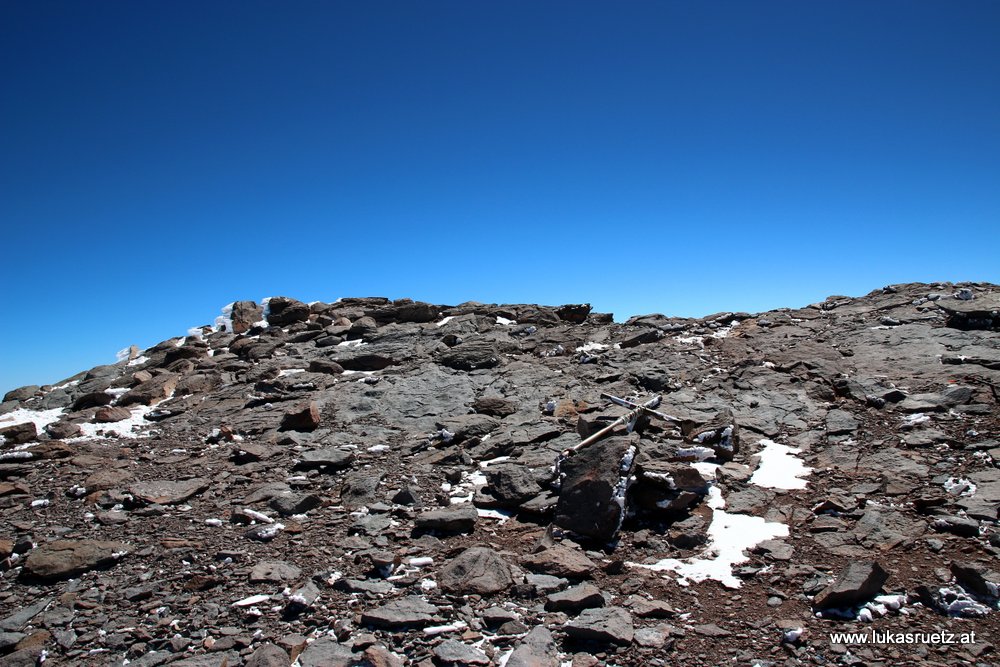
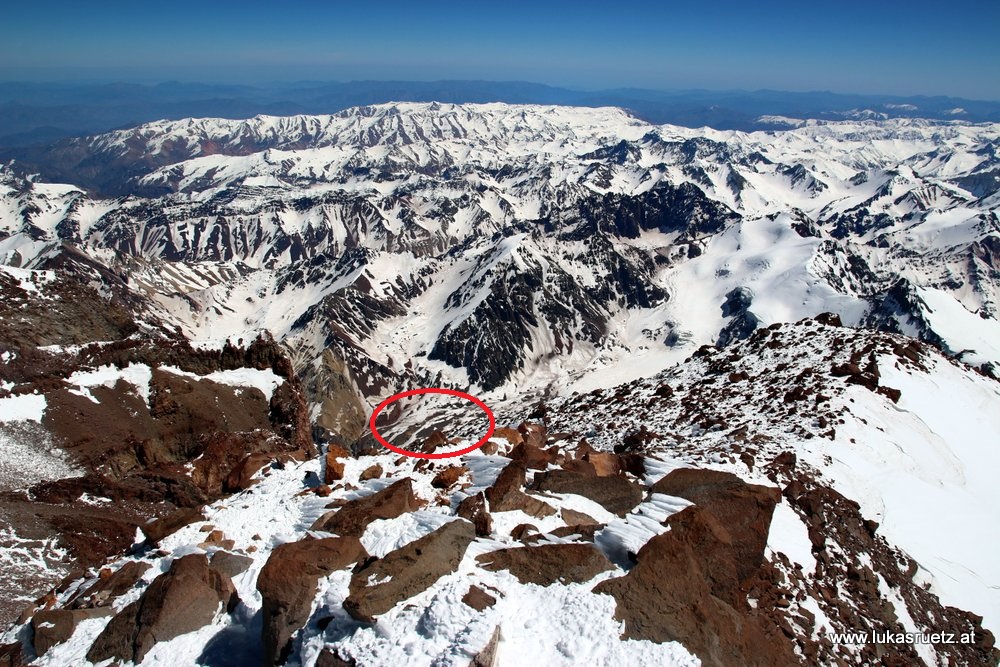
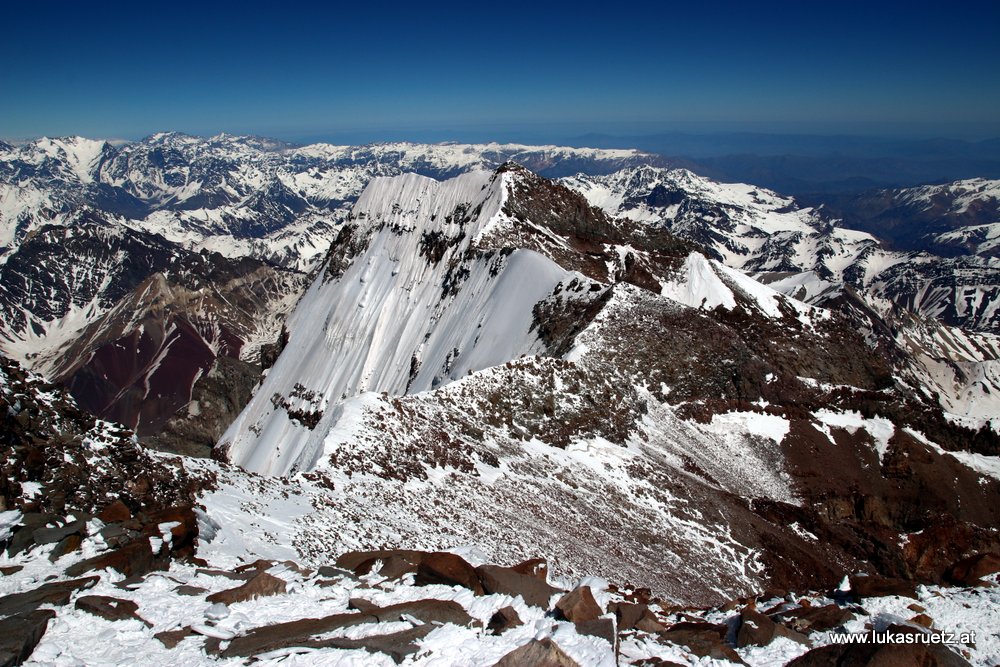
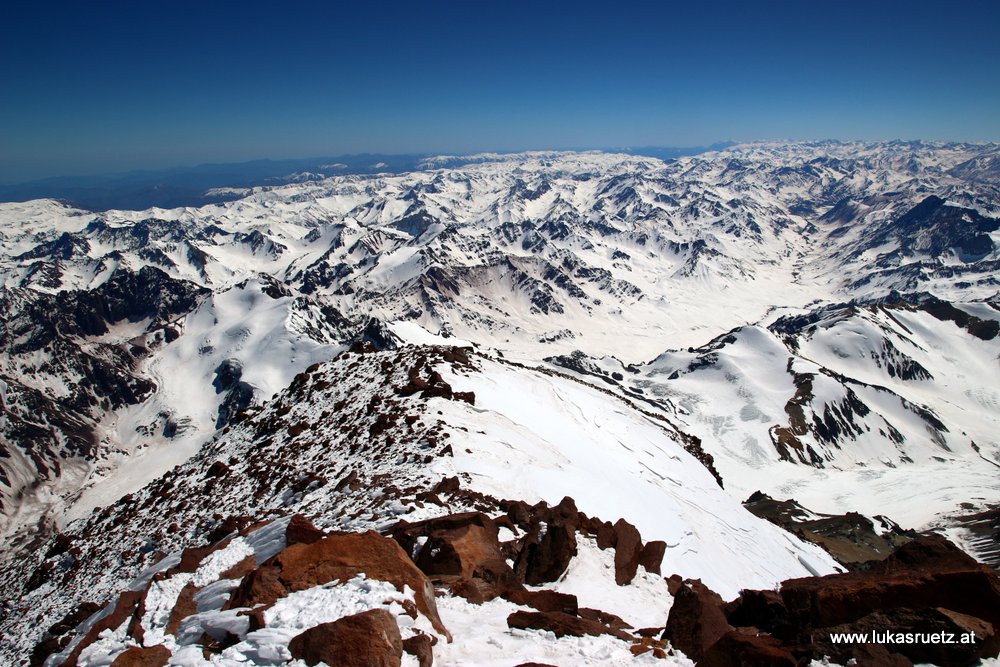
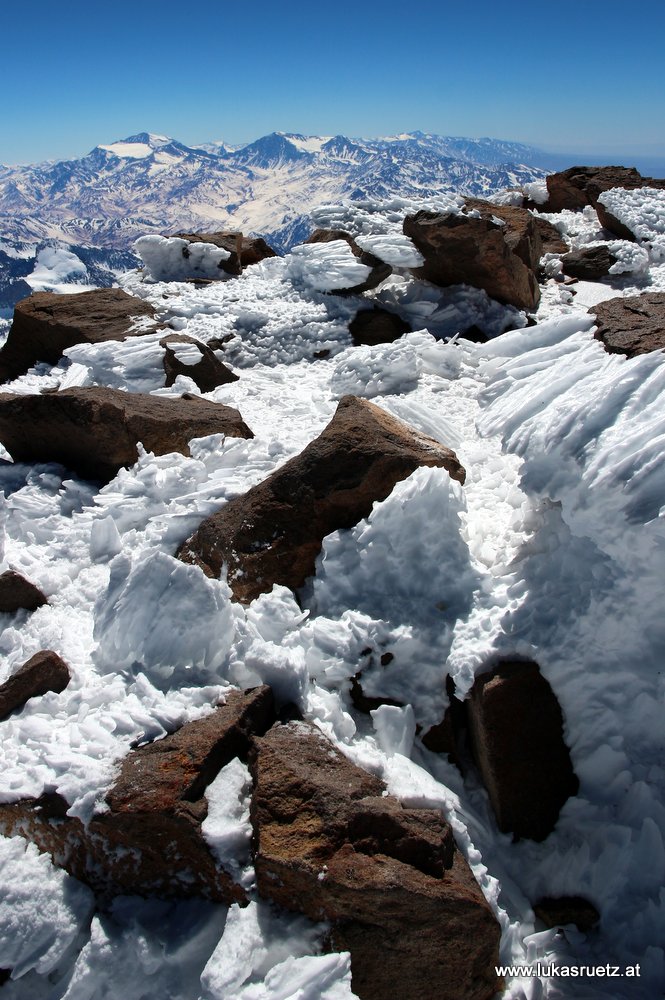

I notice that I’m slower with thinking up here. The steep part of Gran Acarreo with a height difference of 1000 meters I can run down in a very short time and I am back at our tent after 11 hours and 28 minutes. Flo had turned around at 6200m and had melted fresh snow for me in the meantime. We were delighted to be successful here and to climb up and down starting at the basecamp in one day without serious acclimatization.
